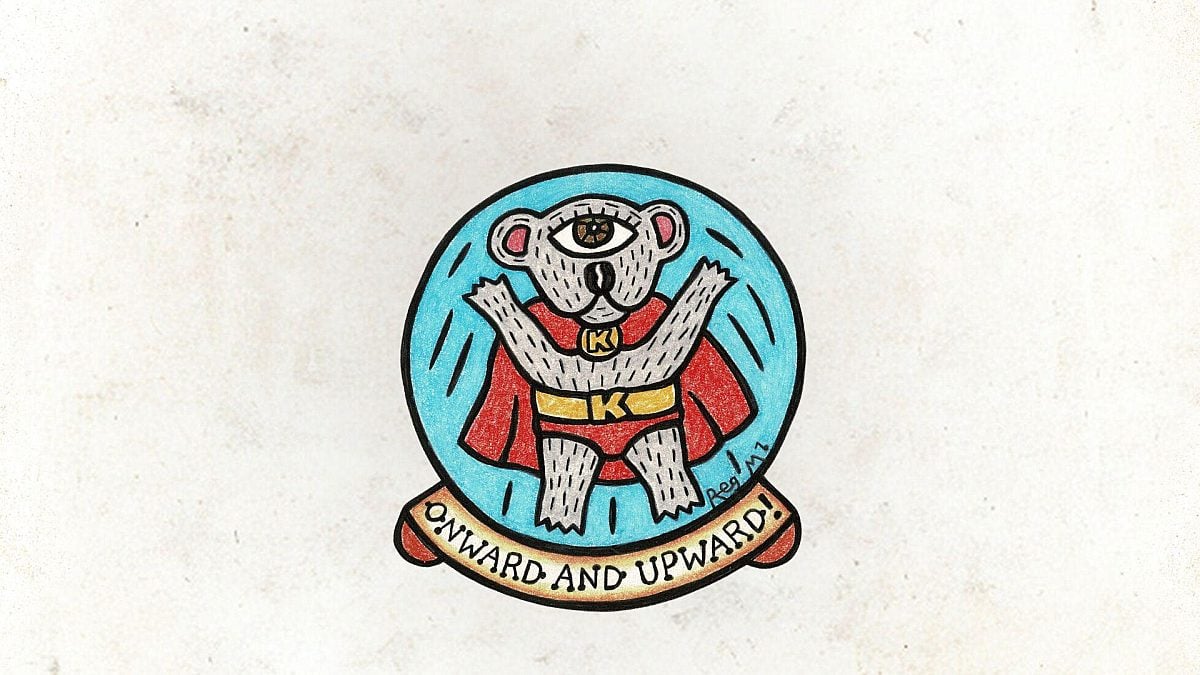
Wilderness Journal #030
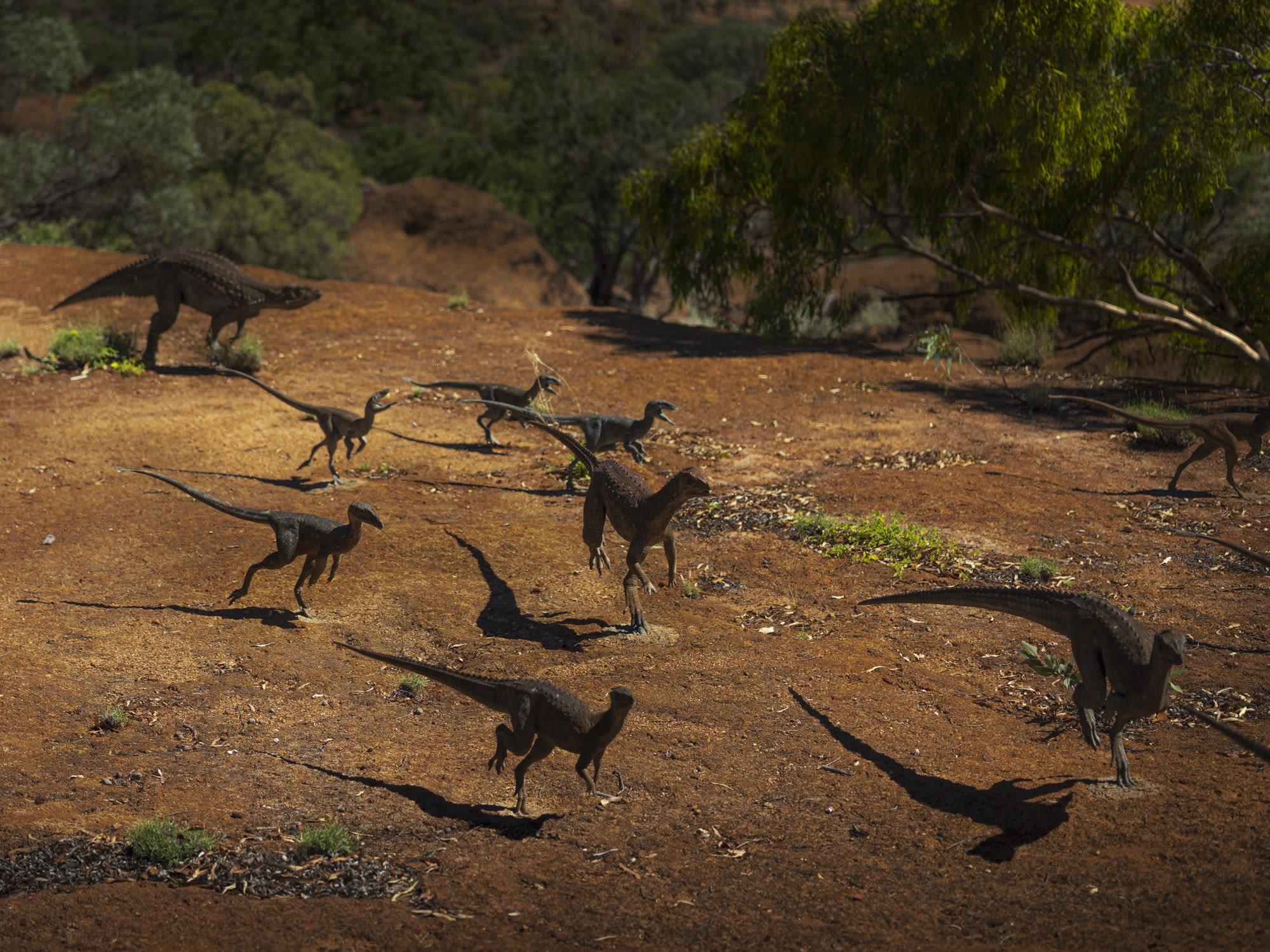
This issue we consider extinction, what it means and how it can be averted, with perspectives from a scientist, photographer, artist, ranger and members of the public.
Photographer John Feely introduces pictures made on the road as he headed out to Channel Country on the Queensland Dinosaur Trail. Main image above: Dinosaur statues, Australian Age of Dinosaurs, Winton, Koa land.
Warning: a photograph of a dead eagle appears in this article.
Out on the Queensland Dinosaur Trail, I found people living on the same layer of earth that dinosaurs lived and died on 90 million years ago in the Cretaceous Period. Looking at contemporary existence through the lens of this time period gives you a different perspective on survival and extinction.
Along the way, I learnt that the last 30,000 years and the time of the dinosaurs were two of the most stable times the planet has ever experienced. This story observes survival and extinction in the current age (the proposed beginning of the 6th, human-driven mass extinction), including evidence of life from previous ages and how they are represented.
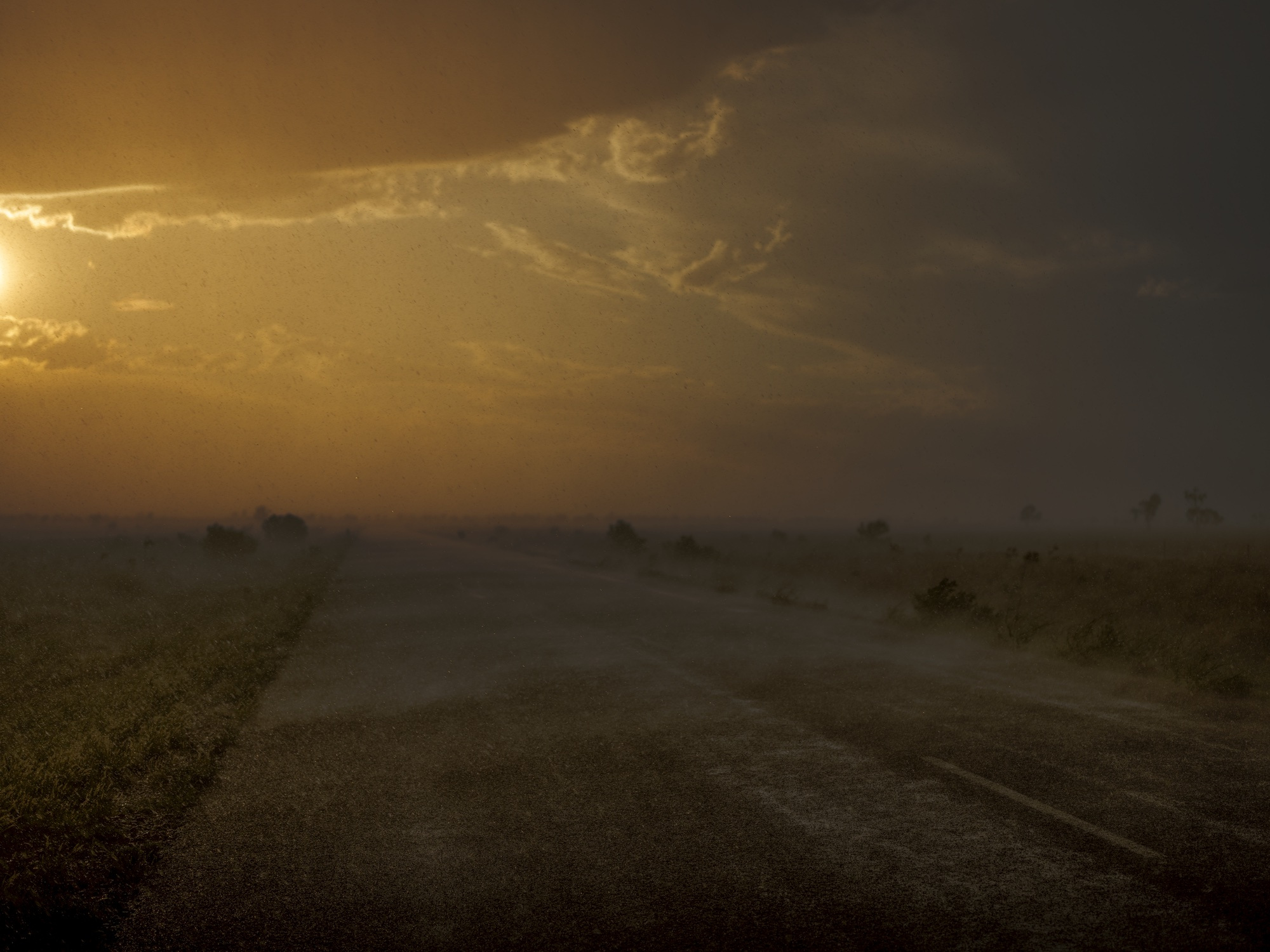
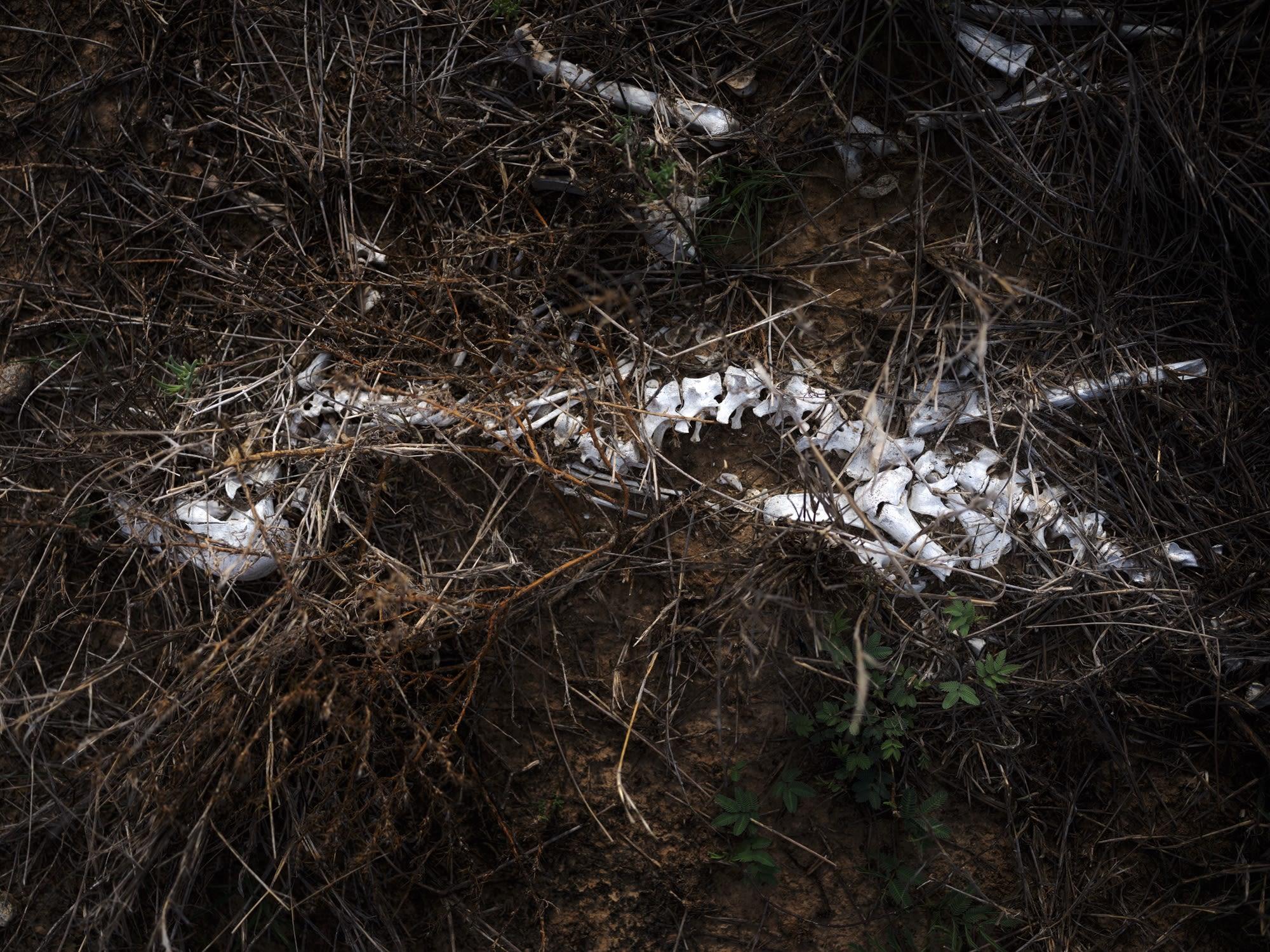
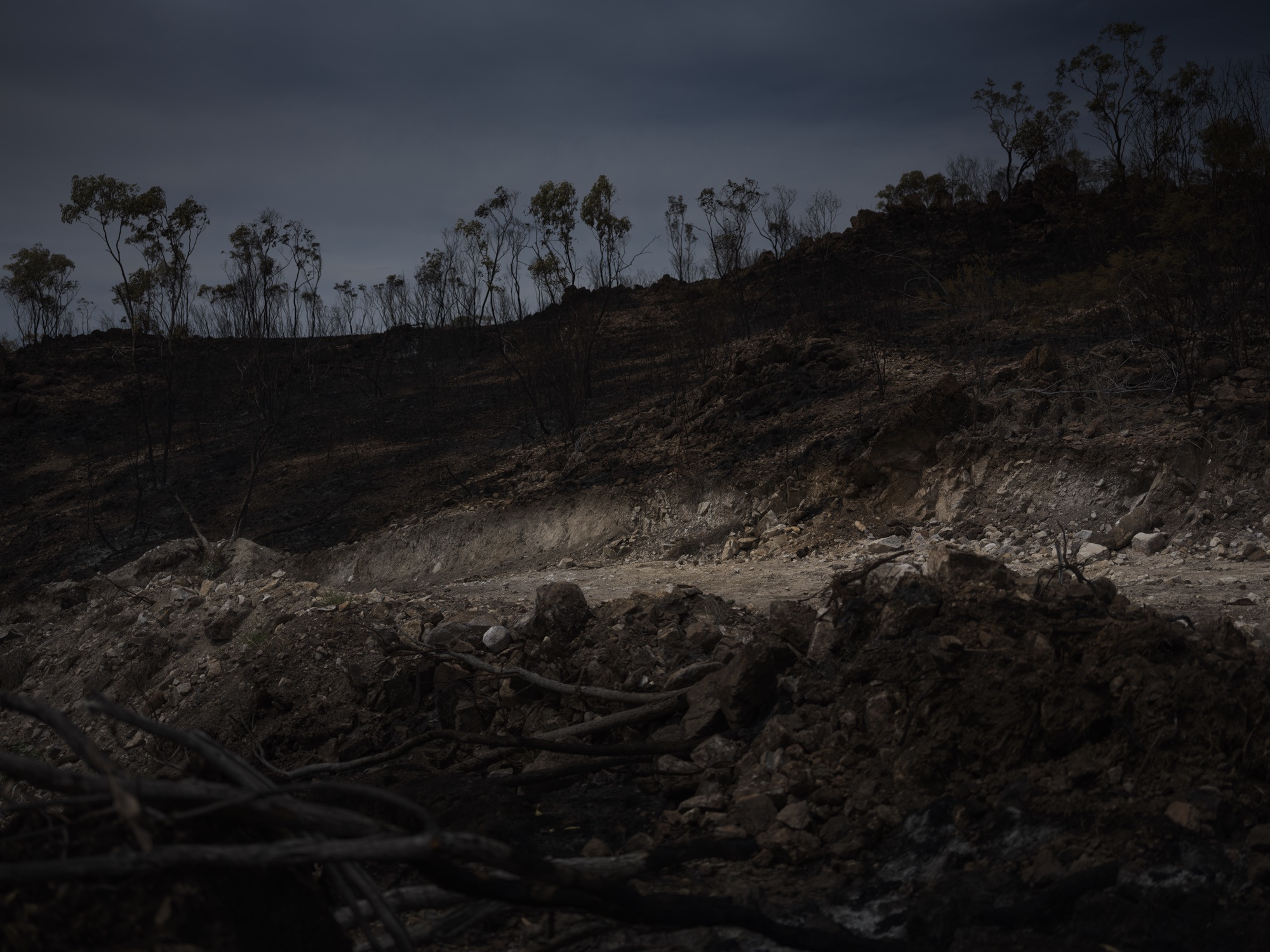
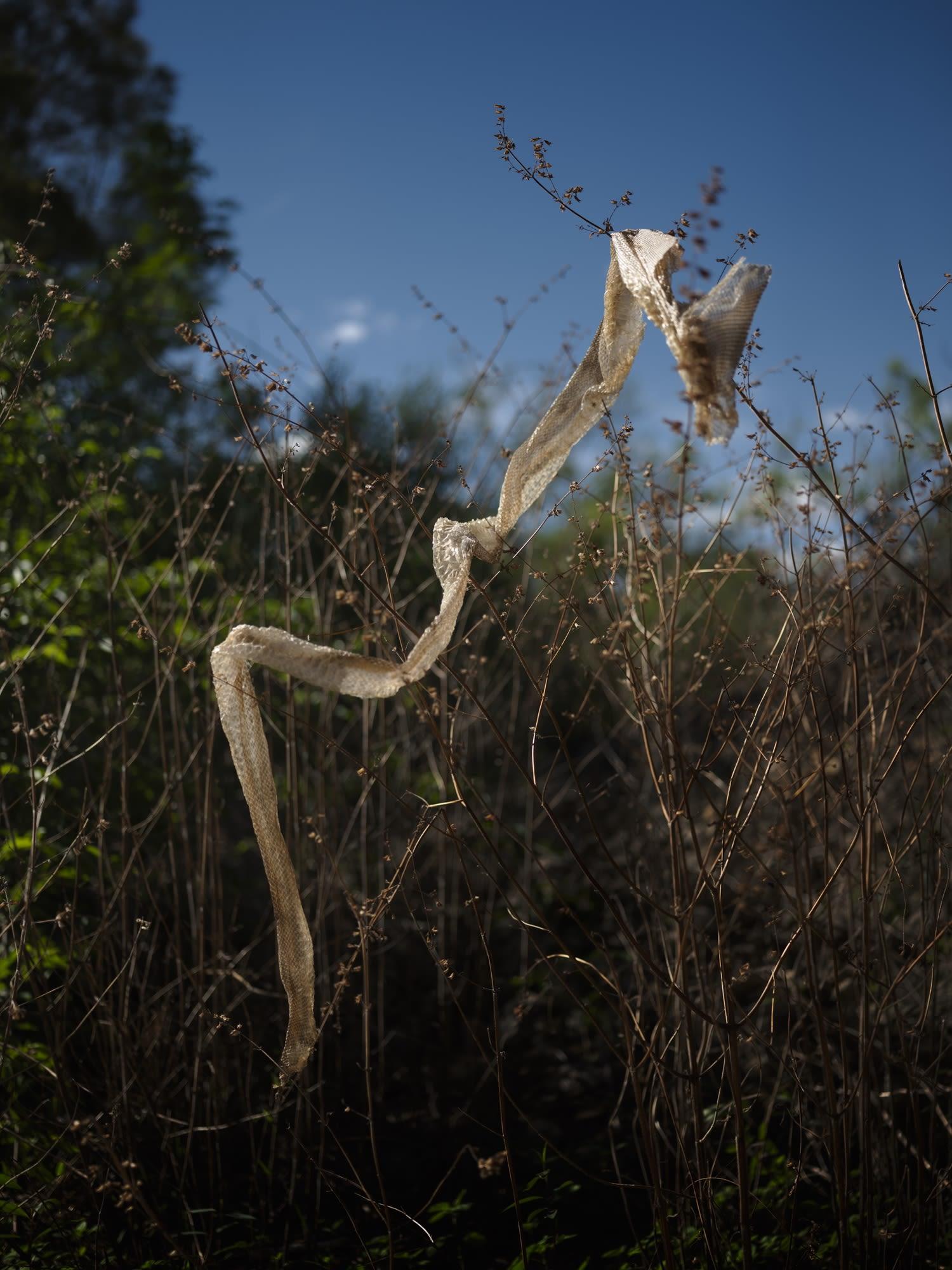
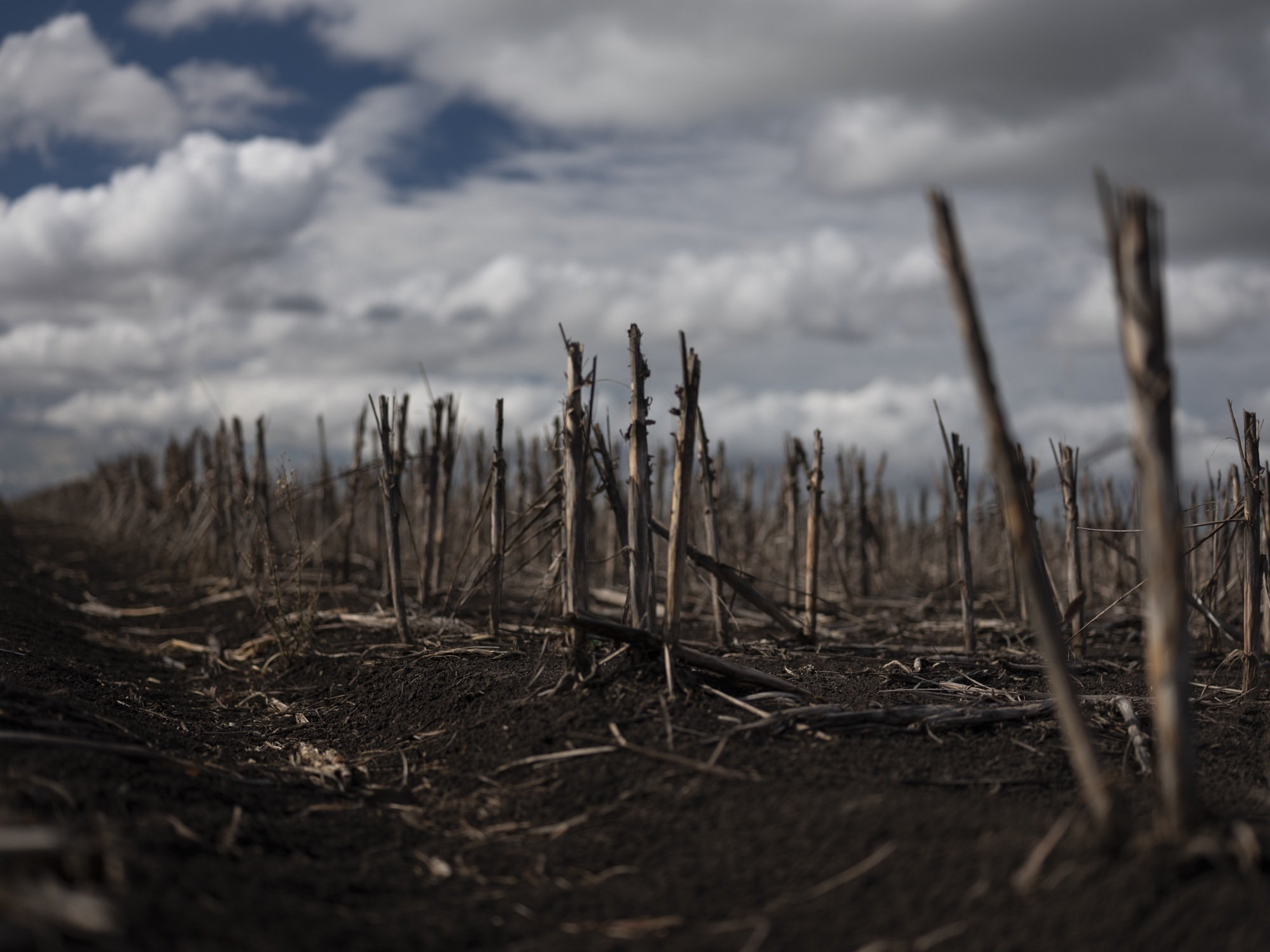
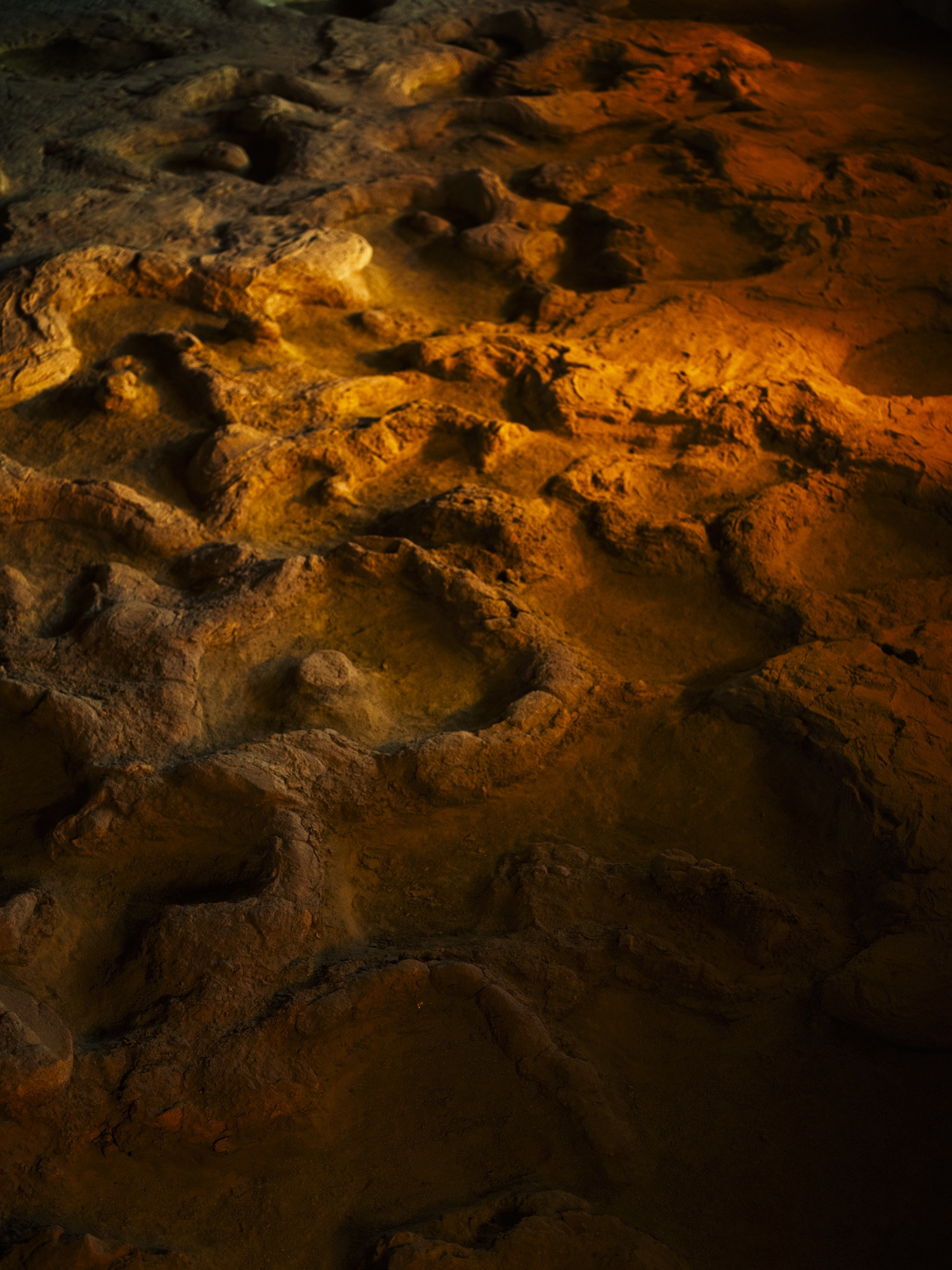
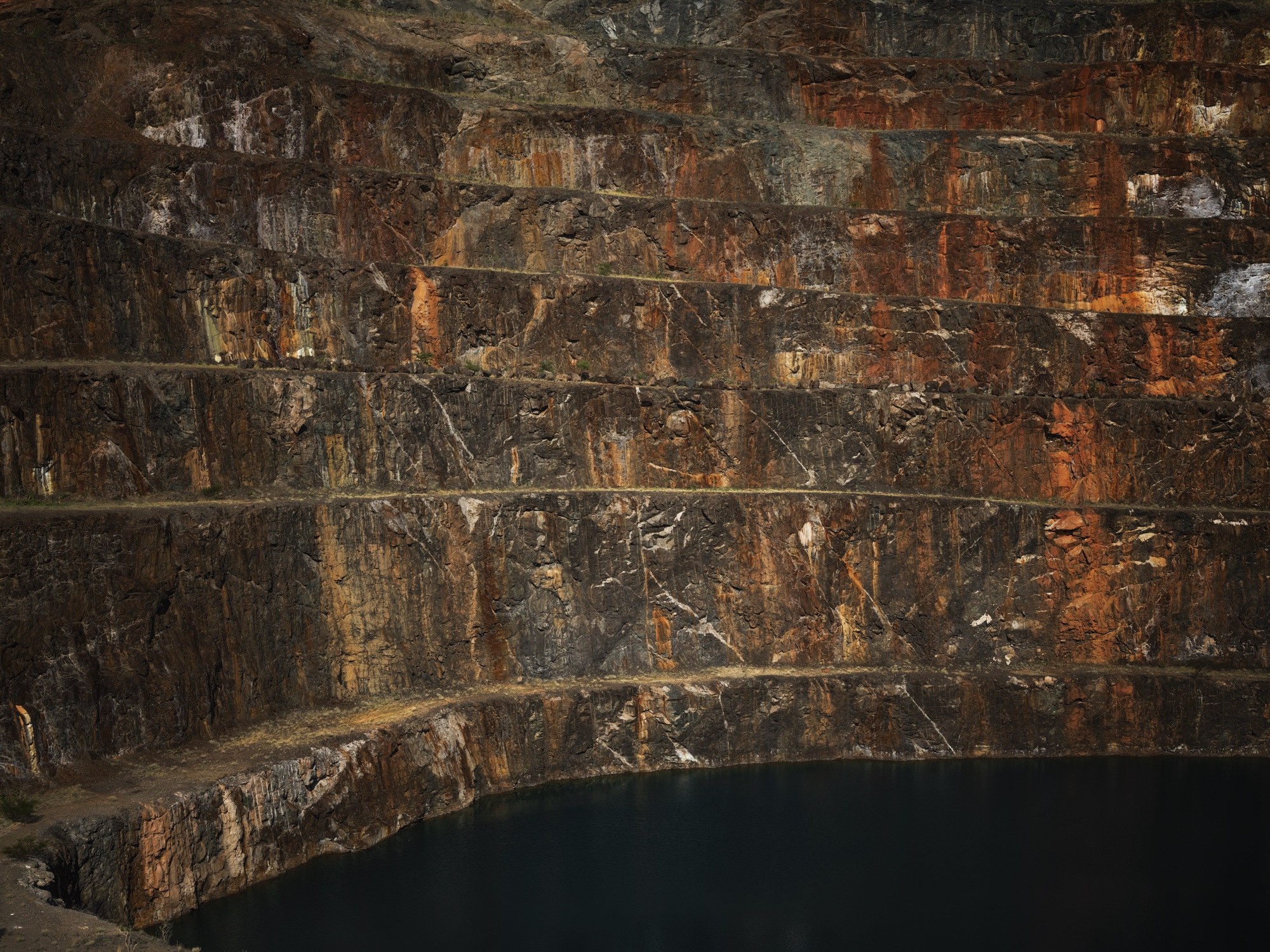
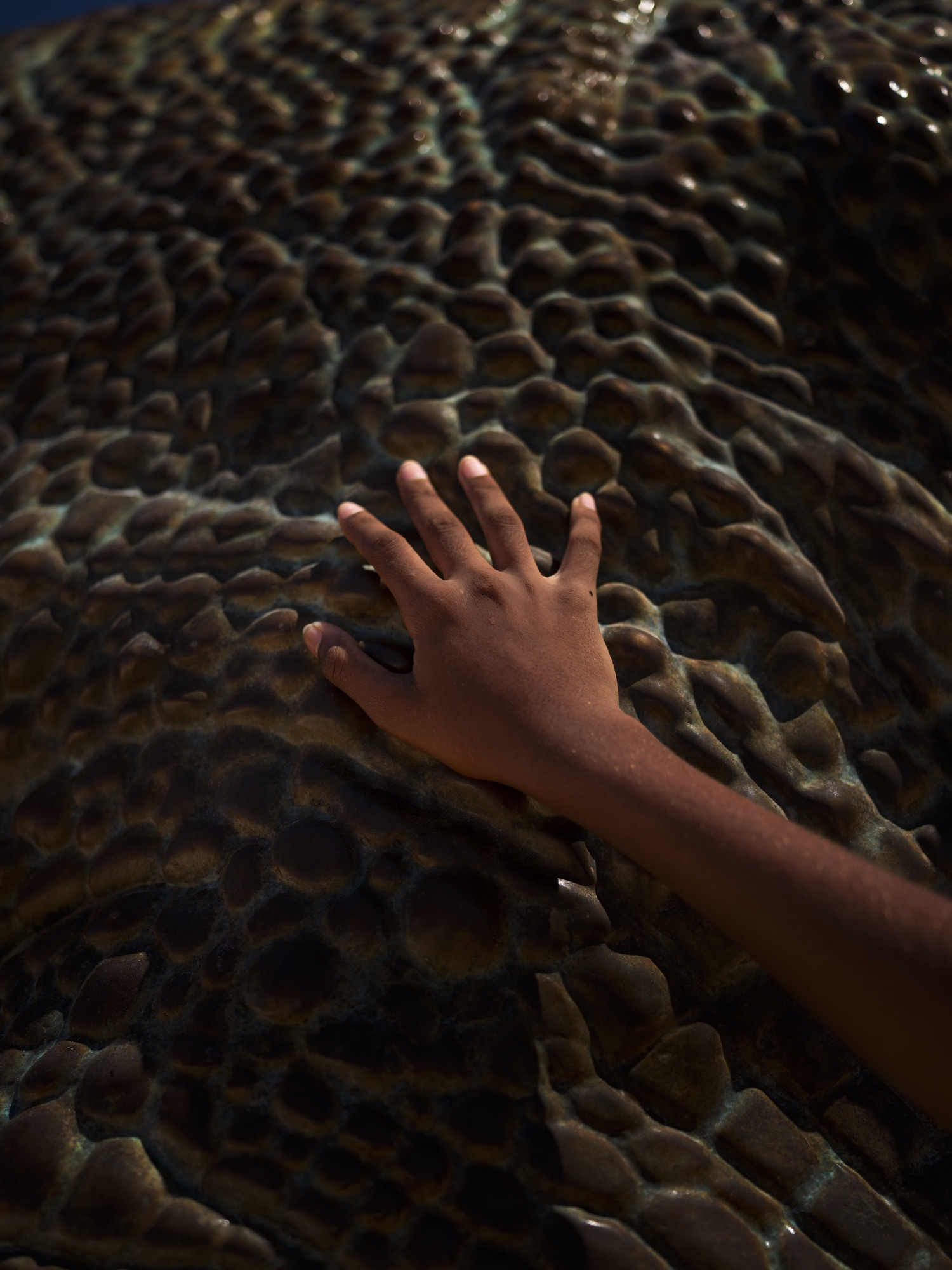
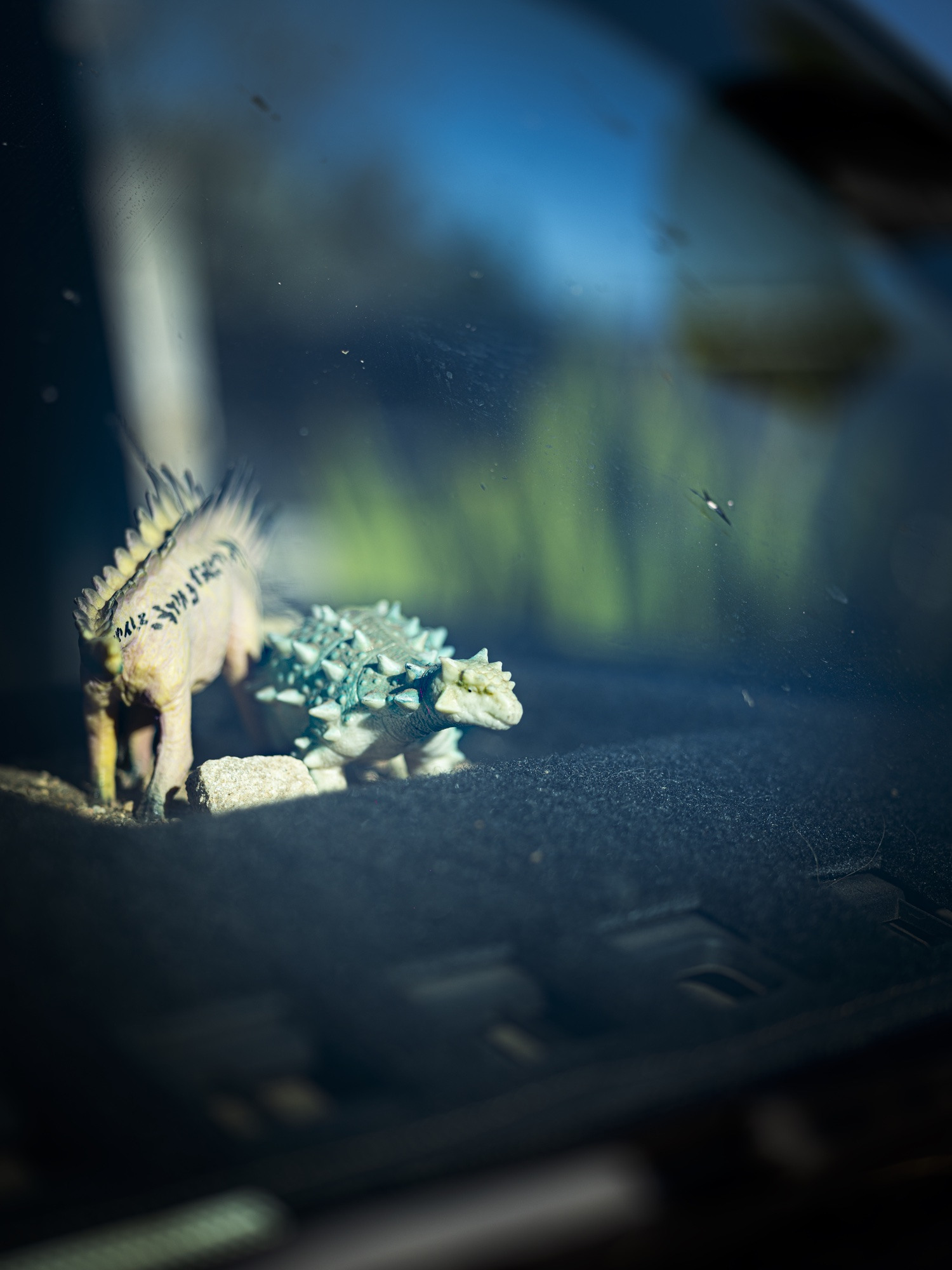
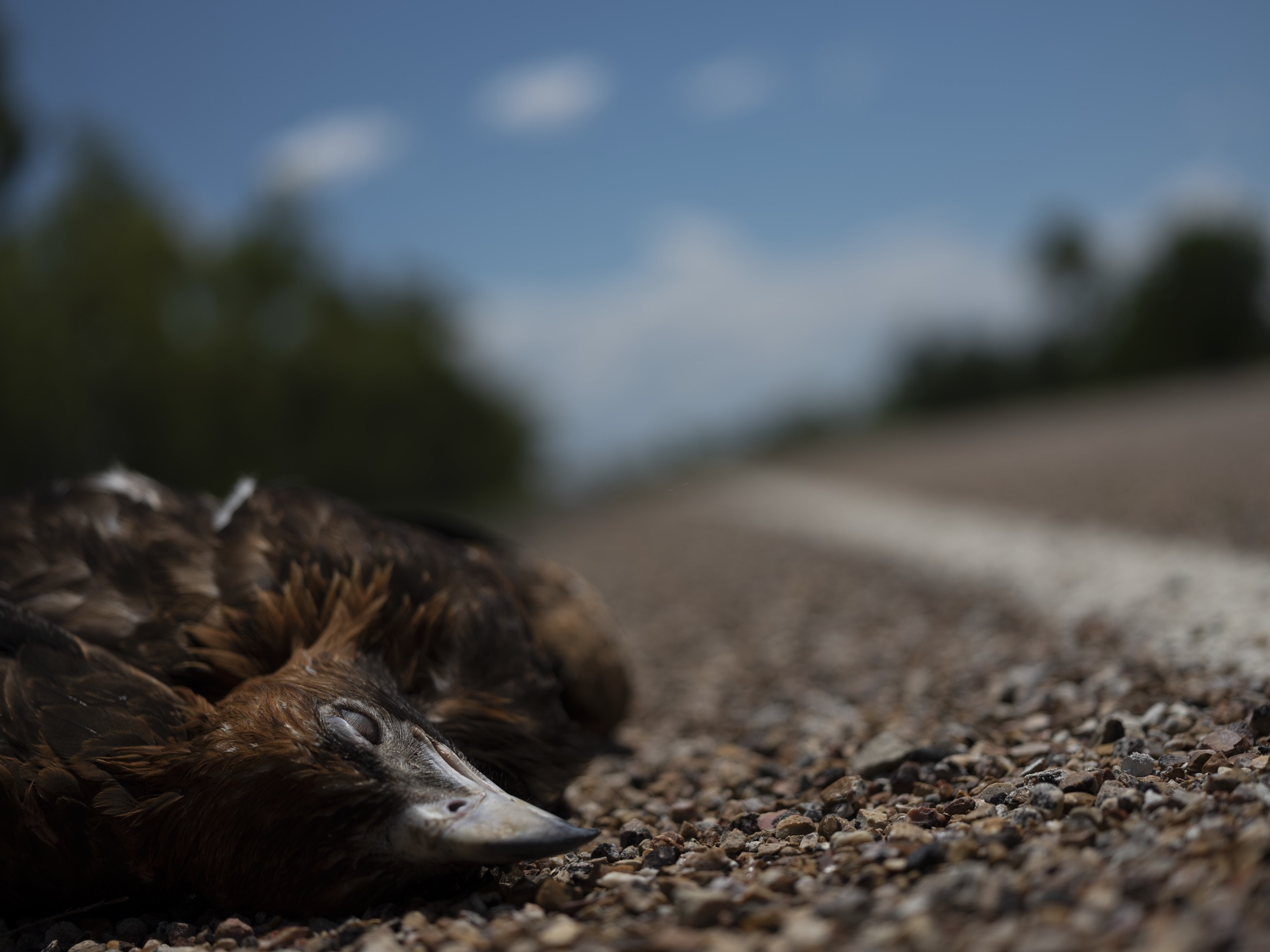
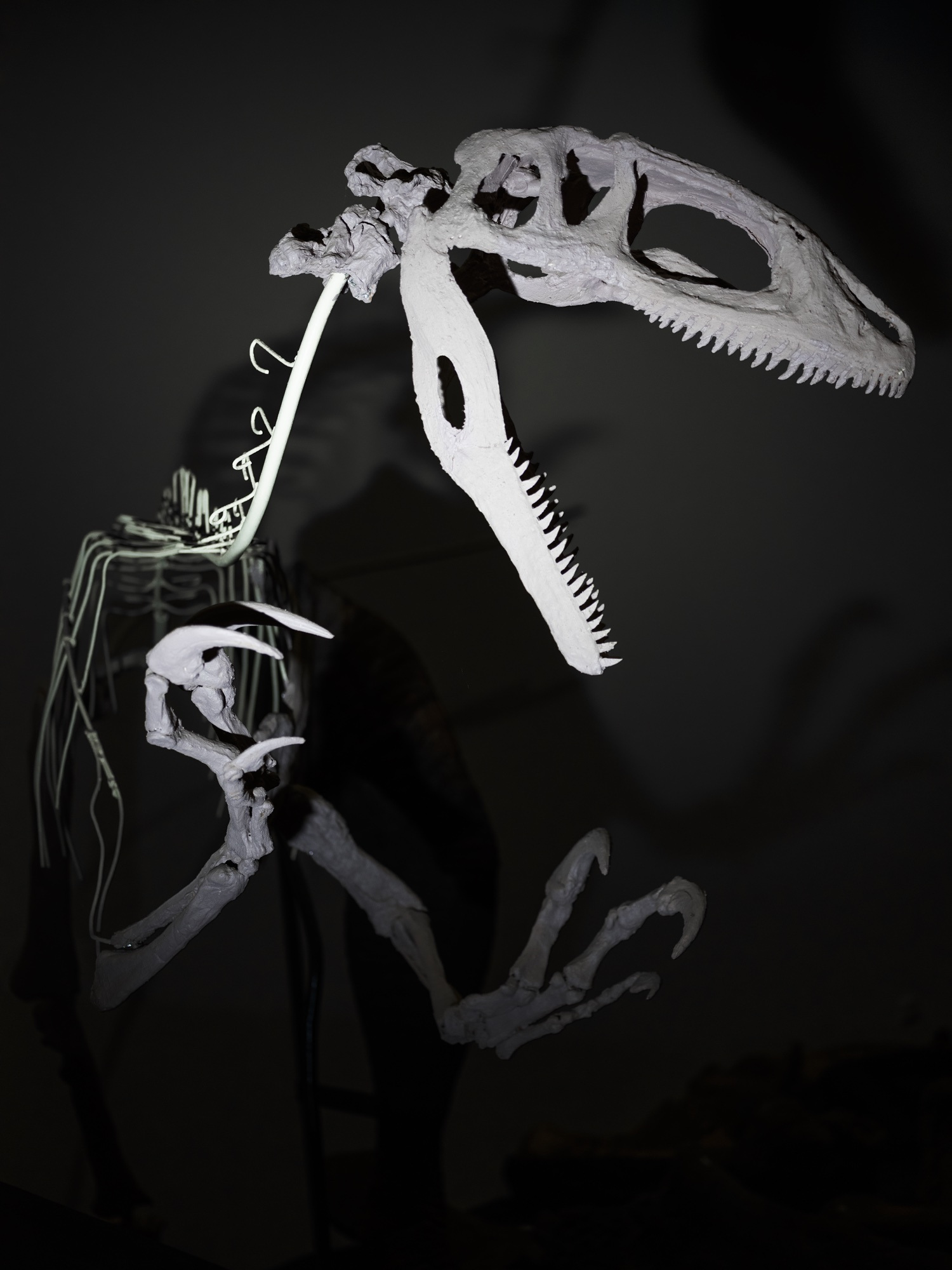
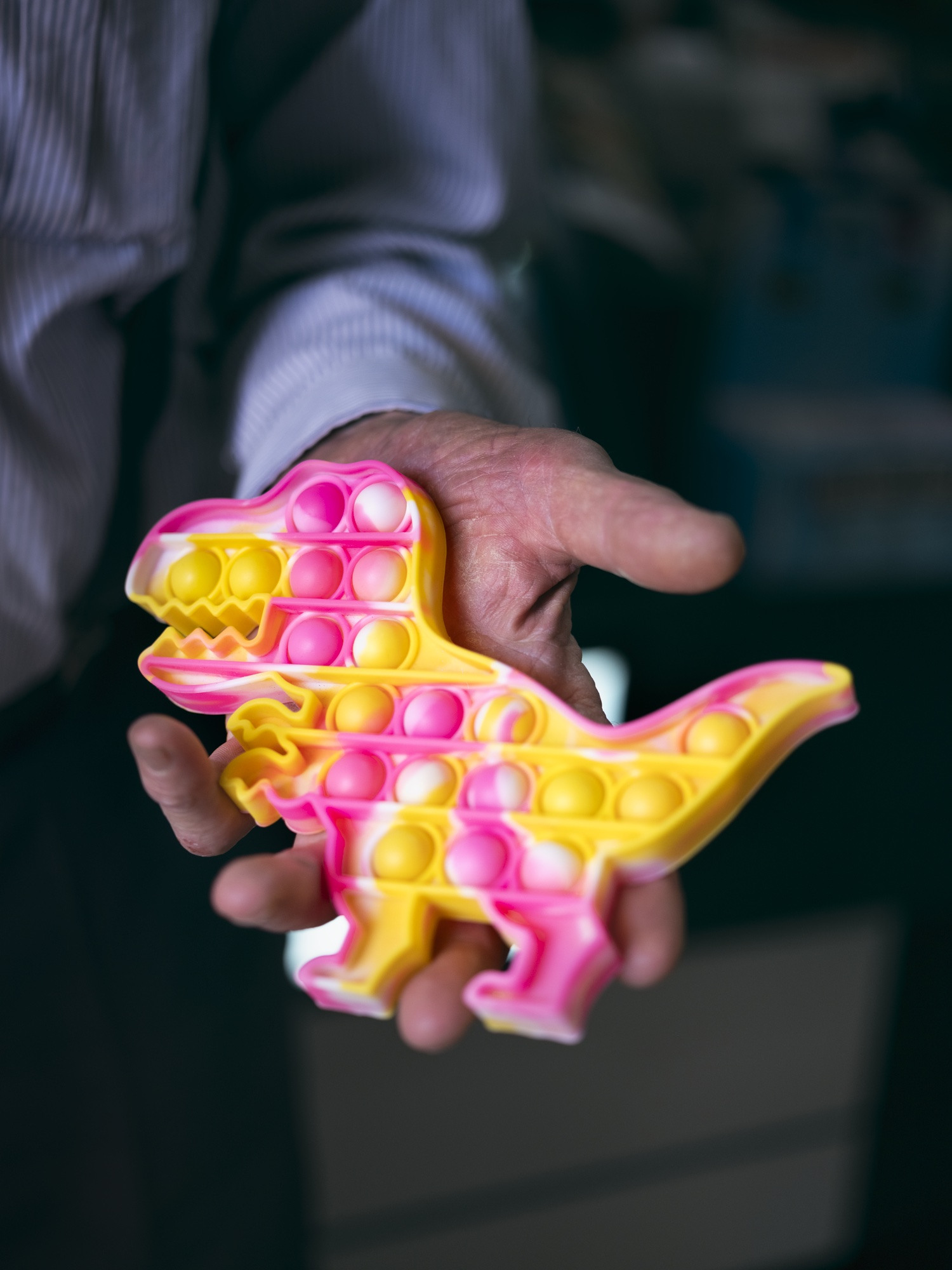
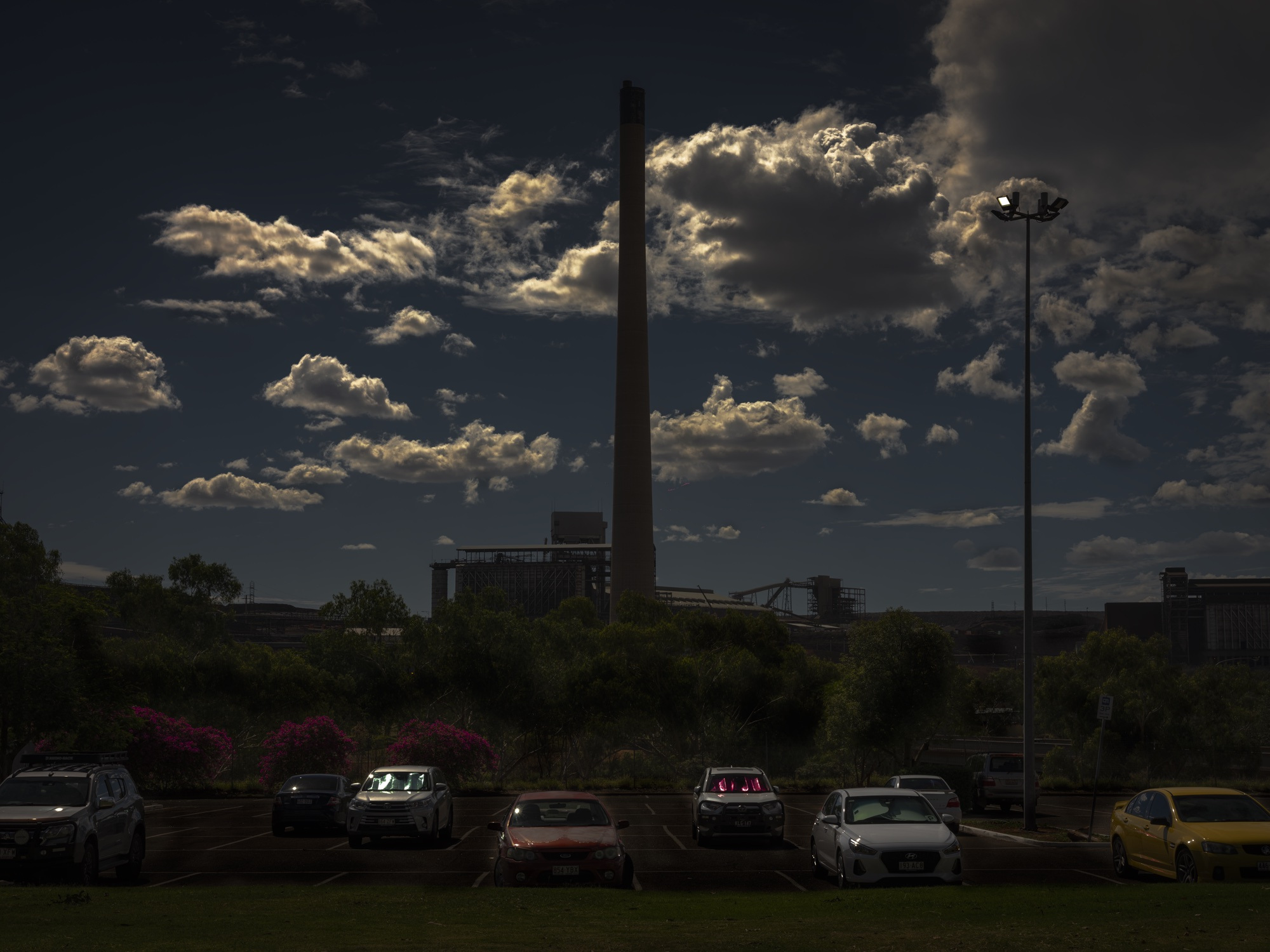
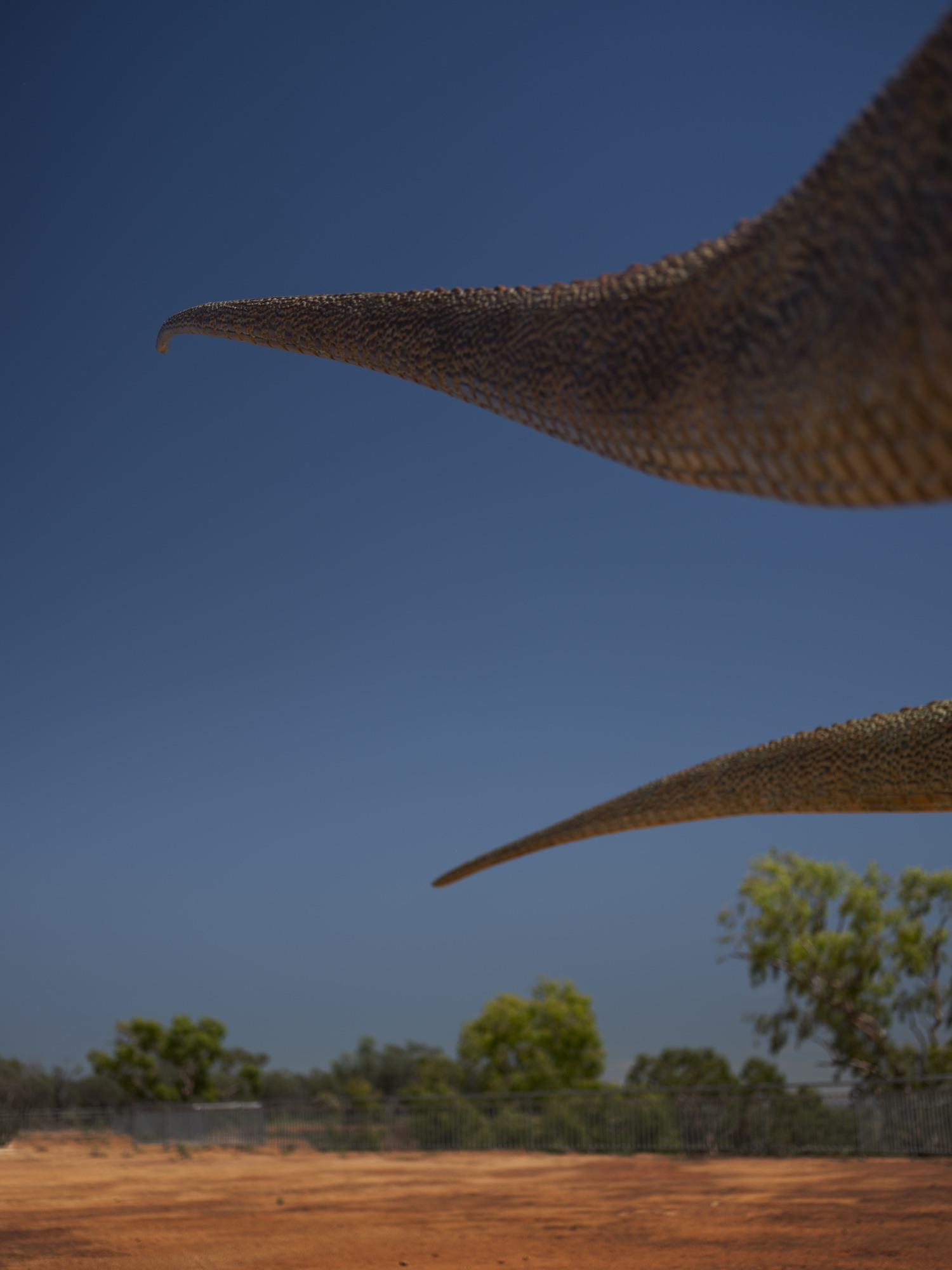
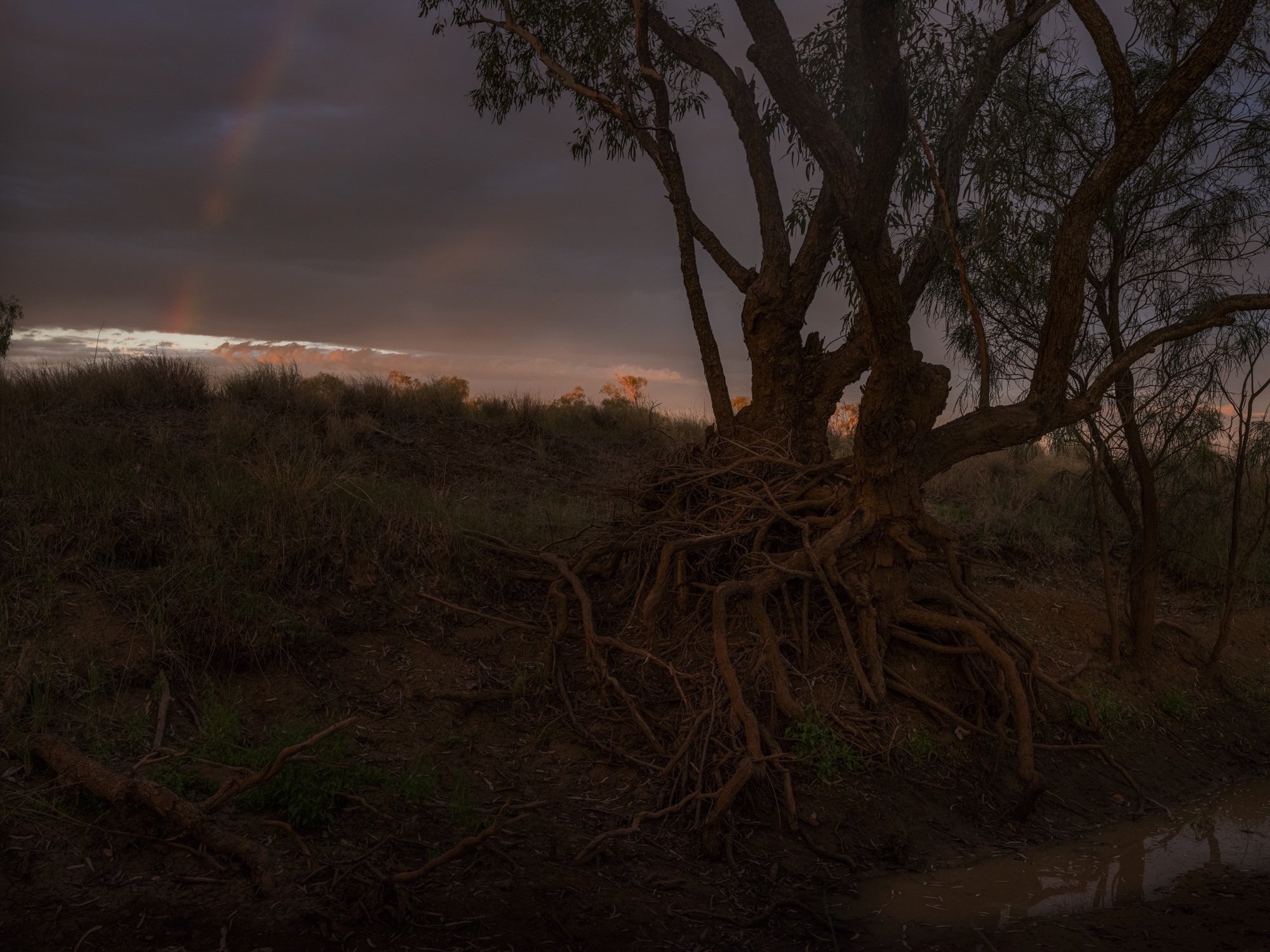
An Honorary Technician at the Australian Age Of Dinosaurs museum, Lucy Adams has a unique take on the state of the planet. It's here, in Winton, Queensland, that she lives and works preparing the fossilised bones of animals that walked here 90 million years ago.
Portraits of Lucy and her dog Missy by John Feely.
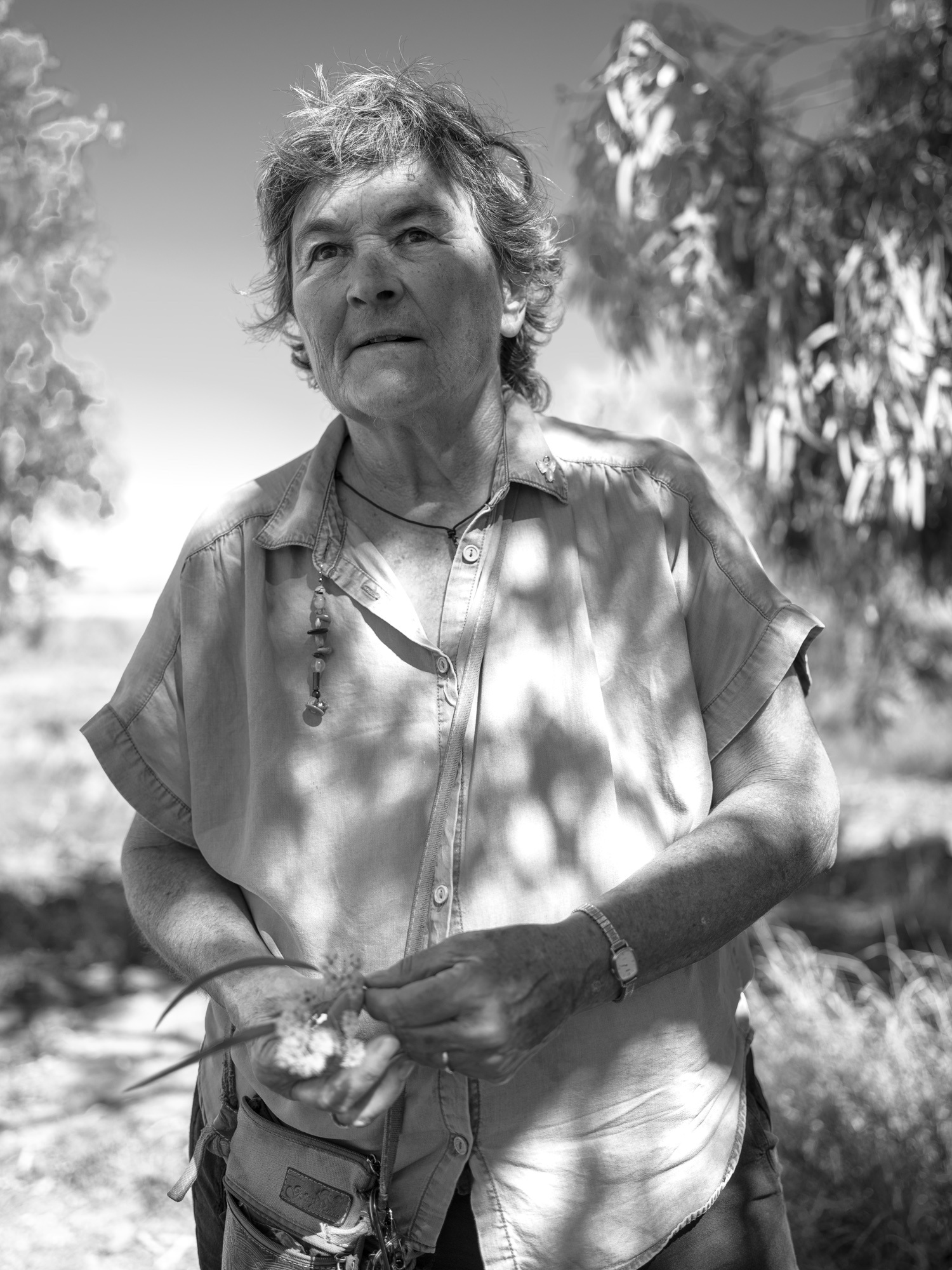
“I love being out here in Winton. It's living on the edge; on the edge of what you can and can't do. You've got to be on your toes, have connections and not be on your own. You are living with the land, at its mercy day to day. Living this way keeps me connected and excited. You have to be very much awake and attuned to what you are doing.
“Living here, on the edge of Channel Country in Central West Queensland is living on the Cretaceous plane that was here 95 million years ago. I can feel the age of the Earth up here; I feel like that gives me the ability to have a little perspective.
“I am a retired soils scientist and perhaps that is why I like living up here. As a soils scientist you have to love the earth, the natural world. Soil science is interdisciplinary—you have to understand geology, hydrology, botany and more; you need to be a super scientist of sorts and be able to read a landscape. And what a landscape it is here: ancient, timeless.
“I now work as an ‘honorary technician’ at the Australian Age of Dinosaurs museum and research centre in Winton. I arrived last October, there are four others here who have been here for 17 years or so, working in the labs and prepping dinosaur bones for examination and display. You may have heard about the recent discovery of a fossilised crocodile found with its last supper of a dinosaur in its stomach, which is currently on display.
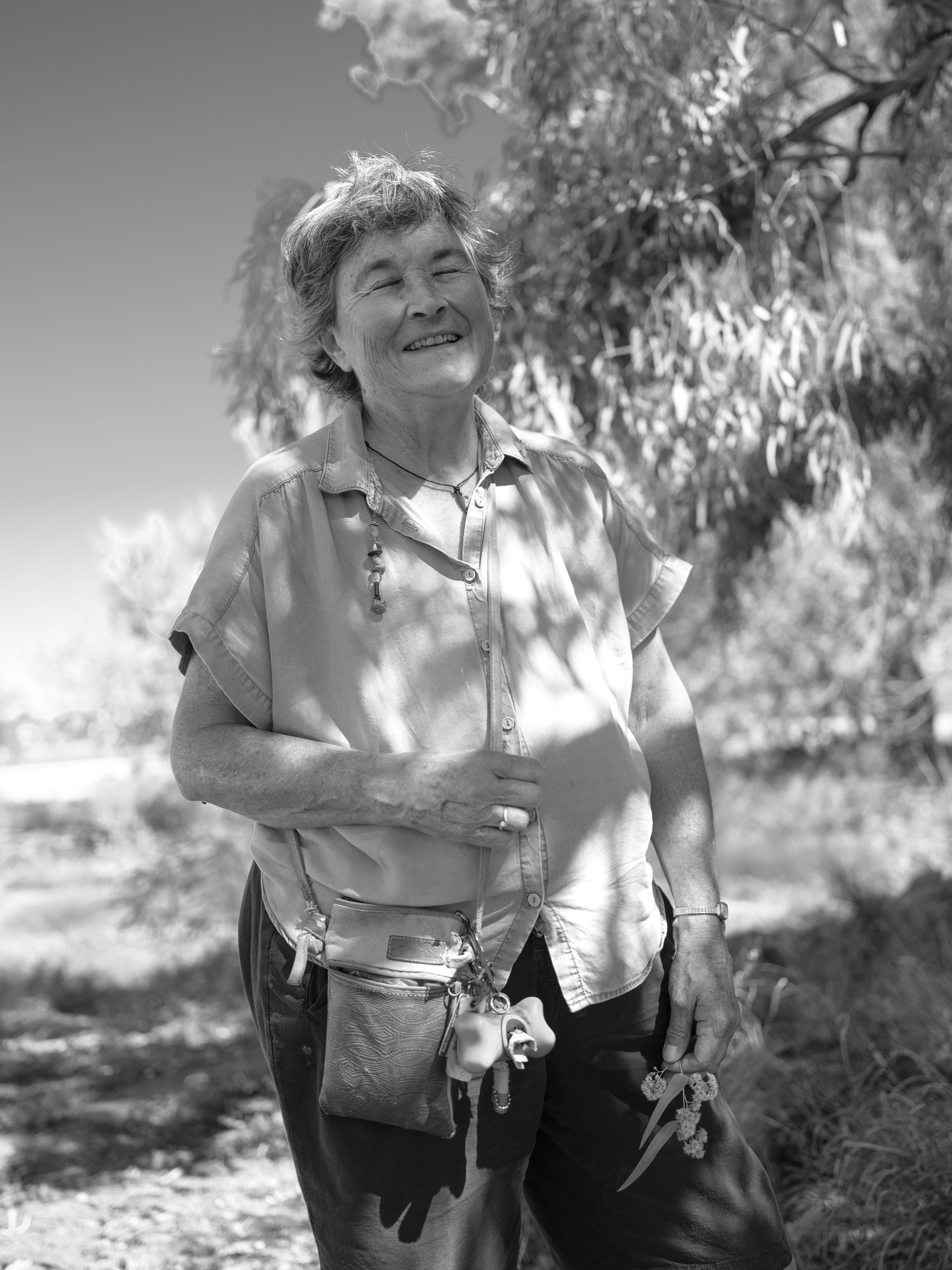
“Dinosaurs were here at a stable time. The environment was cool, temperate forest. But things can change rapidly. Change is normal for the Earth. Every 50,000 years or so we transition from a glacial to an interglacial period. This is super quick in terms of the planet's existence. But it can happen quicker still!
“There have been at least five mass extinctions in the past, caused by various things. The dinosaurs were killed off 66-65 million years ago when an asteroid hit the mantle of the Earth; as it touched the Earth’s surface the back of it was at the height of a Boeing's passenger jet’s flight path.
“We now live in a very stable time in history, similar to how it was 66 million years ago when the dinosaurs walked here before that cataclysmic event. However, as we are witnessing, the Earth is becoming increasingly more hostile to life, a result of our activities. I remove rock from the fossils of animals that lived here during the Mesozoic era; we are now in what scientists consider to be the Anthropocene, an epoch marked by human activity. We are twisting the knobs so severely; we need to dial it back and think of our place in the grand scheme of things before it’s too late. We are in the midst of another mass extinction event, but one of our own making.
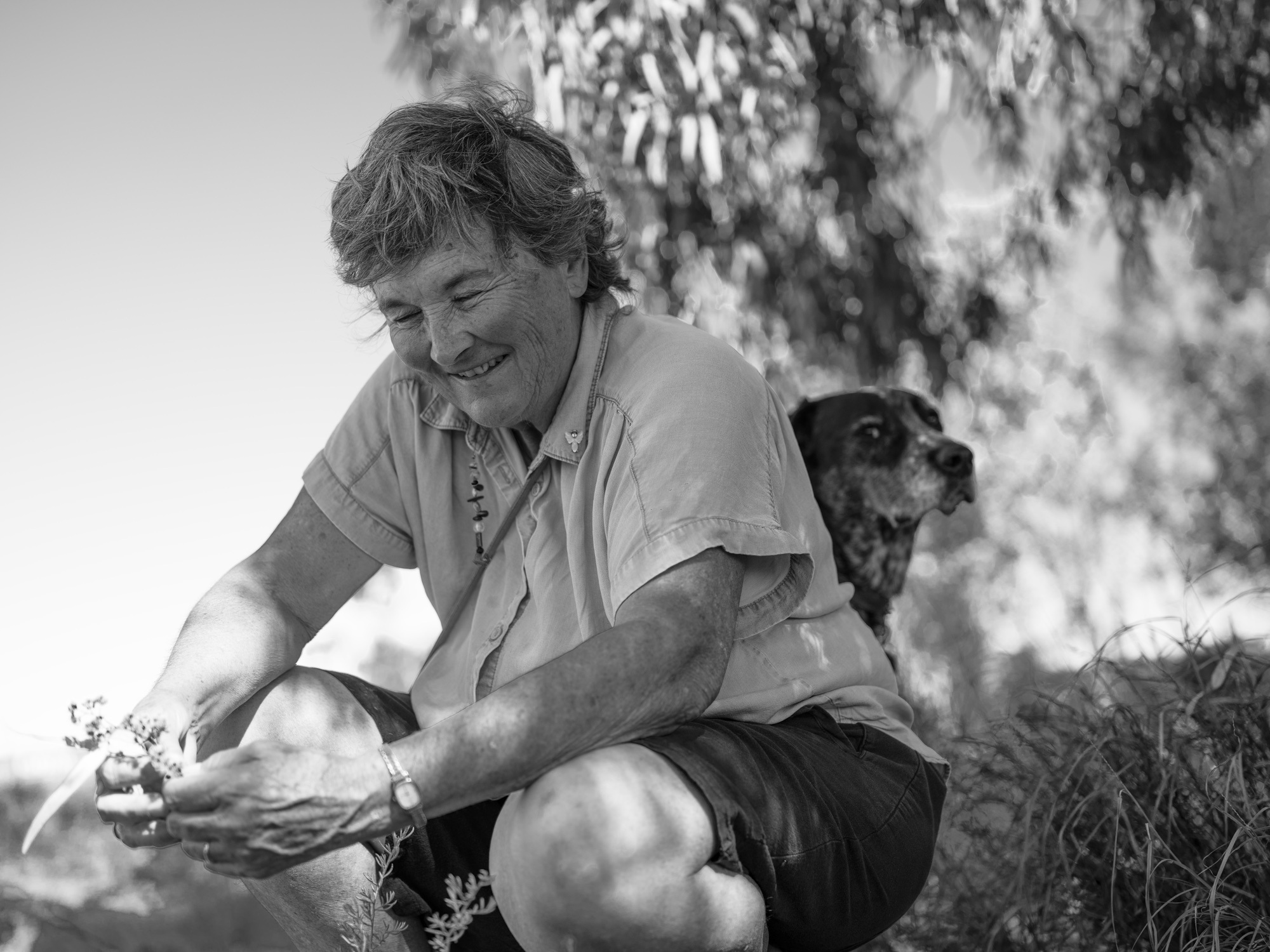
“As the planet warms we need extensive wildlife corridors networking the continent to enable animals and plants to migrate as temperatures rise. We need to learn from First Nations people how to live more sustainably. I recently discovered that I have Dharawal ancestry on my father’s side, and this is something I want to explore.
“We have to become the custodians rather than the owners of the land or we will be the authors of the Sixth mass extinction.”
The Australian Age of Dinosaurs is a museum and research centre on the Queensland Dinosaur Trail in Winton, Queensland.
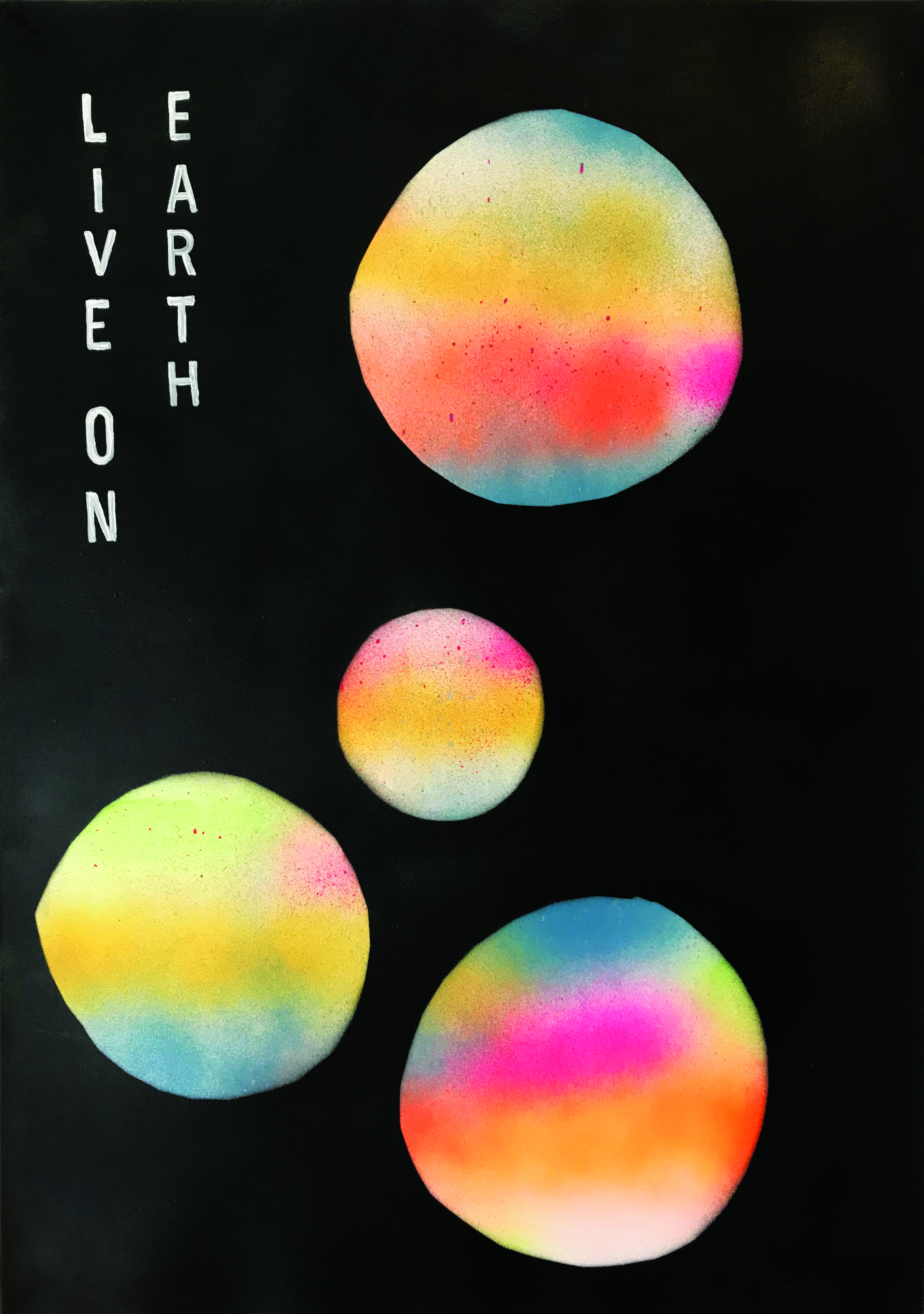
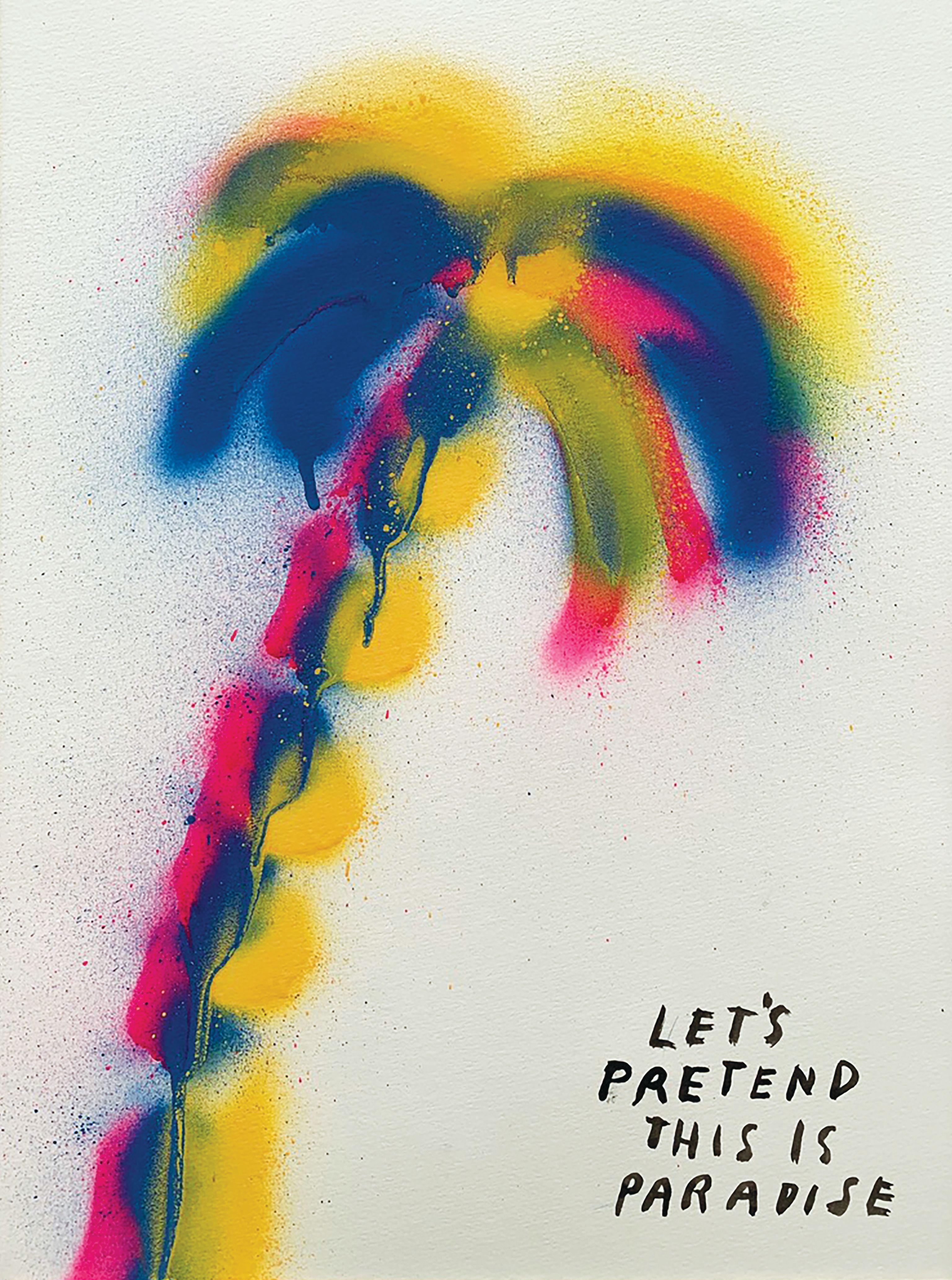
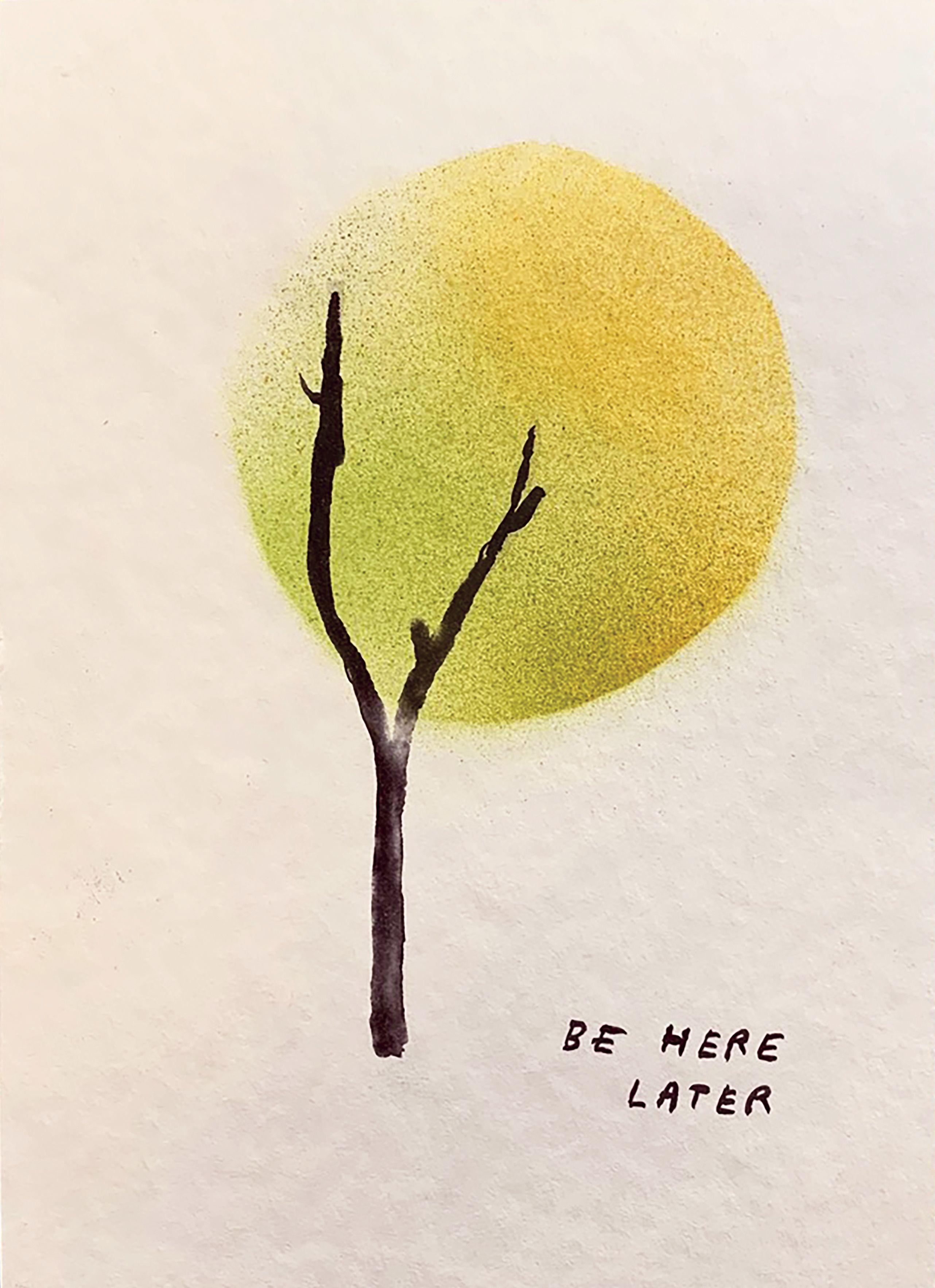
Localised extinction, whereby a species once prevalent in a location is no longer present, is ever more apparent as wildlife numbers fall. We spoke to a scientist, a ranger and a member of the public about their experiences of locally disappearing species, and asked ‘what can be done?’
Dr Michelle Ward; Postdoctoral Research Fellow at the School of Earth and Environmental Sciences, The University of Queen
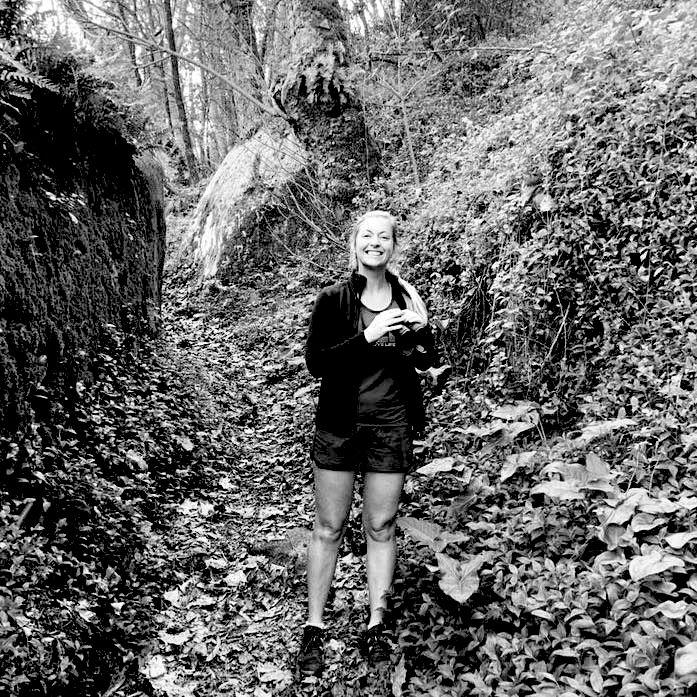
Your recent study into localised extinction across Australia focused on birds—was there a particular reason for that?
We have great historical and current data on threatened birds in Australia. Birds are also incredibly important for ecosystem function.
Was there a decline of a species that you found to be particularly worrying—what were the key drivers for the decline?
Western Ground Parrots are on their last legs. They used to occur from Perth to Dongara, and Israelite Bay to Augusta but are now just in two locations: Cape Arid National Park and Nuytsland Nature Reserve. They have been driven to local extinction across more than 99% of their historical habitat because of habitat loss, invasive species, and fire. They are at a significant risk from isolated catastrophic events—in the 2019-2020 fires alone, they lost 40% of their last remaining habitat.
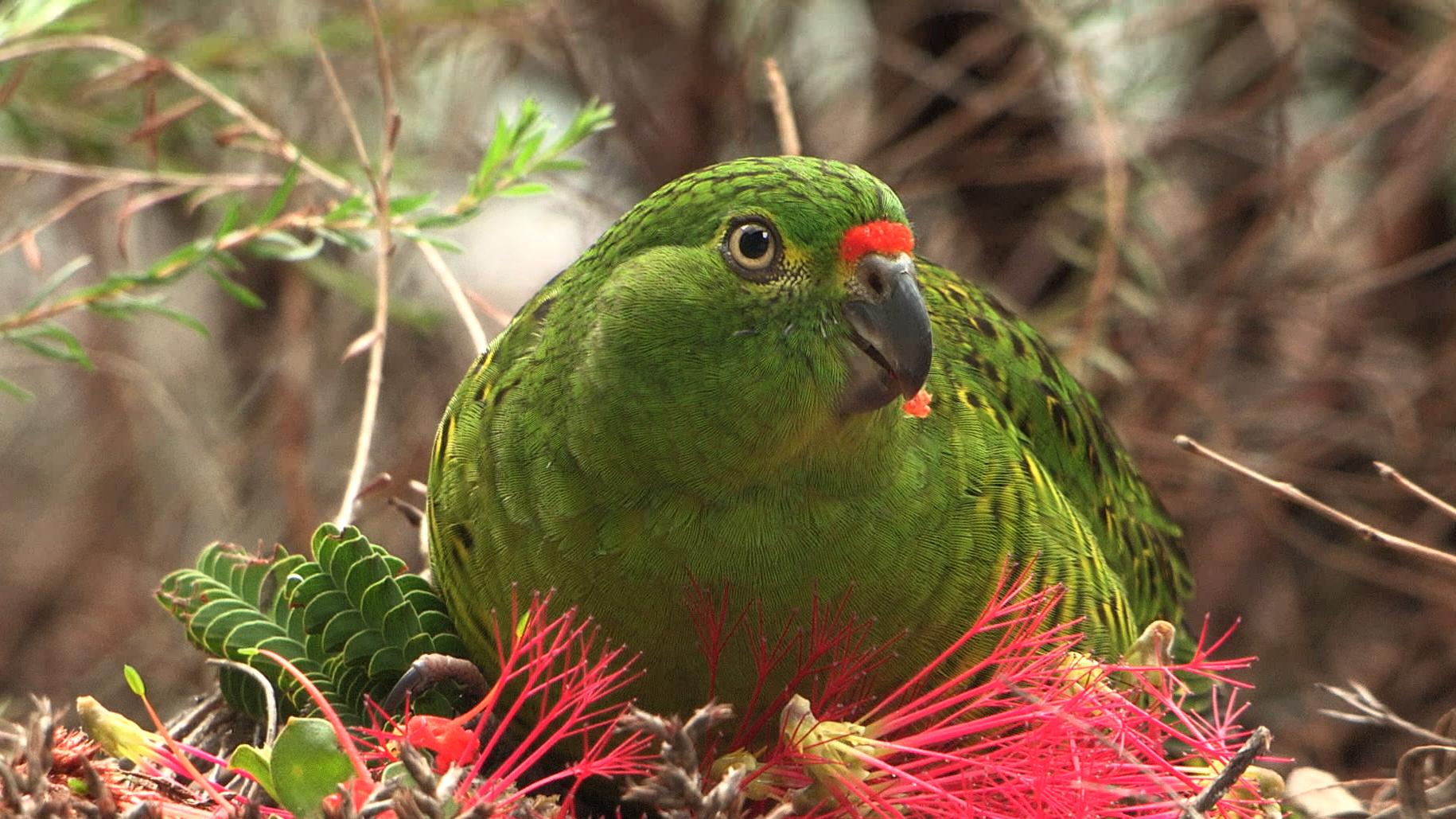
Why is the localised extinction of a species so worrying—what are the knock-on effects for the ecosystem?
Birds are ecosystem engineers. This means that when we lose birds locally or have overall population reductions, we may also disrupt critical ecosystem processes and services, in particular decomposition, pollination, and seed dispersal. This can then lead to total ecosystem collapse.
Why is it especially concerning to see the localised extinction of even common species like magpies for instance? Can common species act as a canary in the coalmine for ecosystem collapse?
Common species tend to be more numerous and so perform many roles that we depend on. In particular, common species like Willie Wagtails and magpies help keep insects in check. Unfortunately, there has also been a decline in not only our highly specialist species, but also common species. This decline in common species has been linked to a reduction in the provision of these vital ecosystem services.
What needs to change to halt the reduction in animal numbers, and by extent local extinctions, across Australia?
We need fundamental reform of the EPBC Act. This must include implementation of strong national environmental standards, such as not allowing any degradation of critical habitat. We need conservation actions and land stewardship in not only where this habitat is now but crucially, where this habitat once was and where it will be under climate change, so species can truly have a chance to recover. This needs funding.
Do you have hope that species can return to places they used to inhabit given the right measures are in place?
Absolutely, it’s really hard to send a species extinct. With restoration, preventing further habitat loss, and the management of threats, species can come back.
Terrah Guymala, ranger on the Warddeken Indigenous Protected Area and Traditional Owner of Ngorlkwarre Estate on Warddeken; alternate director of the Karrkad Kanjdji Trust.
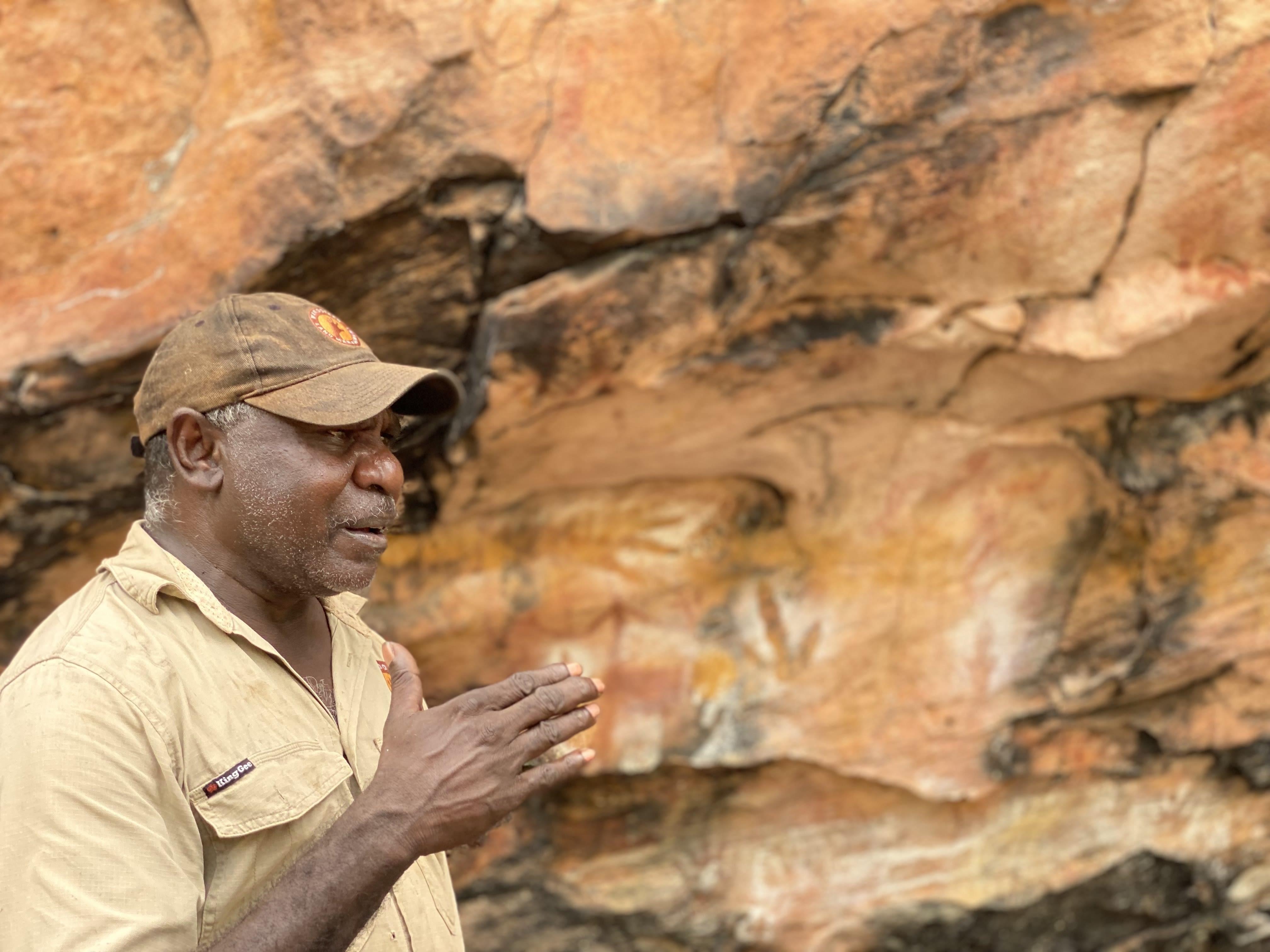
What species have you seen or you know have disappeared from the landscape?
Our old people were used to seeing so many animals like the wallabies, goannas, quolls across the landscape, in our backyard. Today there are less and less and it is concerning for us and our old people as it feels like there is a loss of culture. We don’t think we have completely lost any species. We thought the Yirlinkirrkkirr (white-throated grass wren) was gone, but we went on a culture walk focussed on the biodiversity across our country and we found two! We were so surprised and happy! I took my friend back there a few weeks later as he wanted to see them, and there was a family of six! I was so proud that the family was growing.
How does it make you feel seeing animal numbers drop so severely as someone who calls this land home?
It doesn’t feel good. So much of us are connected to these animals through our songlines and when they leave, we lose our stories. We need to make sure they are protected, so our songlines stay strong.
What's one of the causes for animal numbers being in decline?
With the introduction of feral animals like buffalo and pigs, they have ruined the landscape for our native animals. The grass turns to mud, the waterholes aren’t safe for drinking and wildfires also take a lot of grass. With our traditional way of burning, we are able to help manage the land, we are working on culling feral animals so the land can rejuvenate for the [native] animals. It is up to us to make the country healthier so the animals come back.
Have there been success stories in bringing species back and does that give you hope?
Yes, we have seen the djabbo (northern quoll) come back and the Bakkadjdji (black footed tree rat) increase in numbers and we are now working on monitoring their threats, like the cat. We then create plans around how we can protect them using both culling and traditional fire methods and Western science. It gives us and our old people a lot of hope that these special animals are here. We can now show people the bim (rock art) and show them the real animals and tell the story. We are worried that soon some animals will be gone and we only have the bim to go off. This will be sad for our younger generation.
Michael Gerard Bauer, Wilderness Society member, author; and three generations of the same family in pictures.
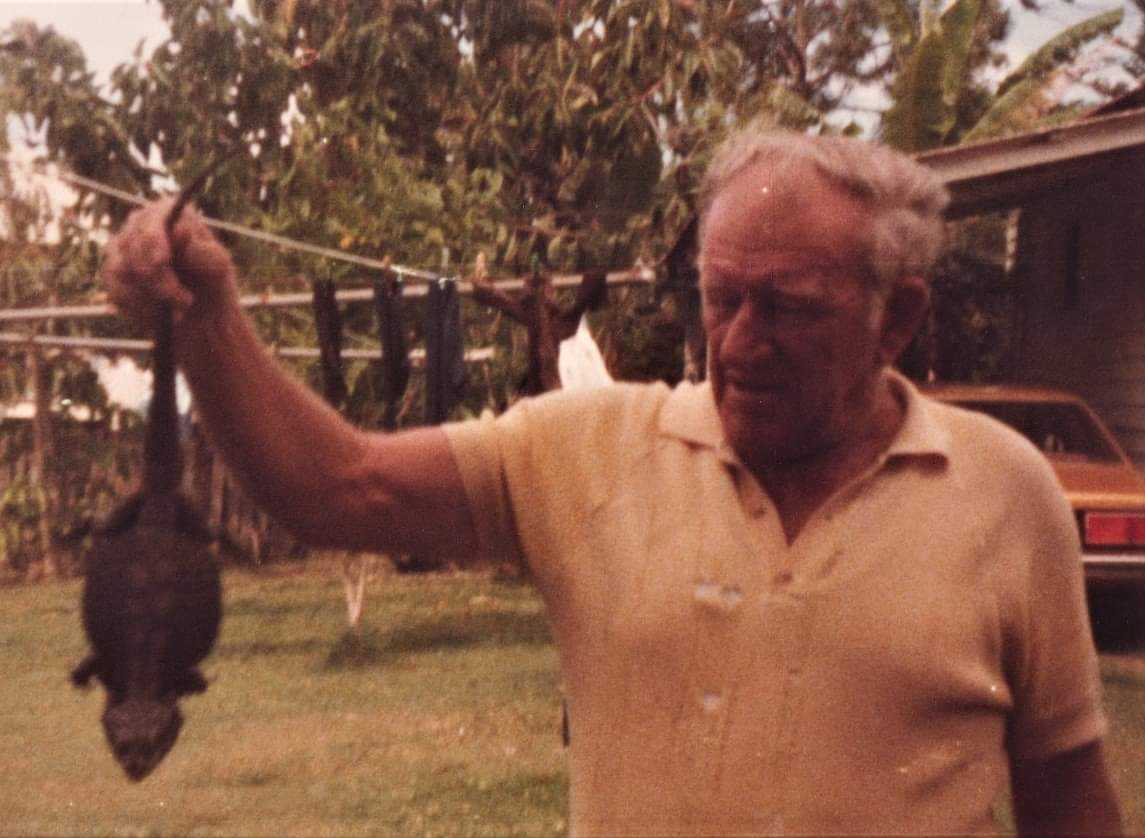
What species have you noticed disappear from your area?
The eastern bearded dragon.
What are your memories of this animal? Was it part of the fabric of your local area?
Growing up as a young boy in Ashgrove, Brisbane, in the 1960s bearded dragons (or Frilly Lizards as we often inaccurately called them) were regular and very welcome visitors in our neighbourhood, often spotted in yards and on trellises and fences. It was always exciting to see one, especially for my older brother and me. We would sometimes keep them as pets (we didn’t know any better back then). I remember trying to keep my fingers clear of their big yellow mouths as we fed them moths and other insects.
Even though they would put on a show and puff themselves up, open their mouths wide and flash their bright tongues to try to scare off anyone who came too close, I always thought of them as harmless and friendly and real characters. I can still remember the feel of their spikey, sandpapery bodies and how they would remain calm in your hand and even seemed to enjoy having their bellies stroked. I loved to see them around, especially the young ones. ‘Frilly’ lizards were as much a part of my neighbourhood as I was.
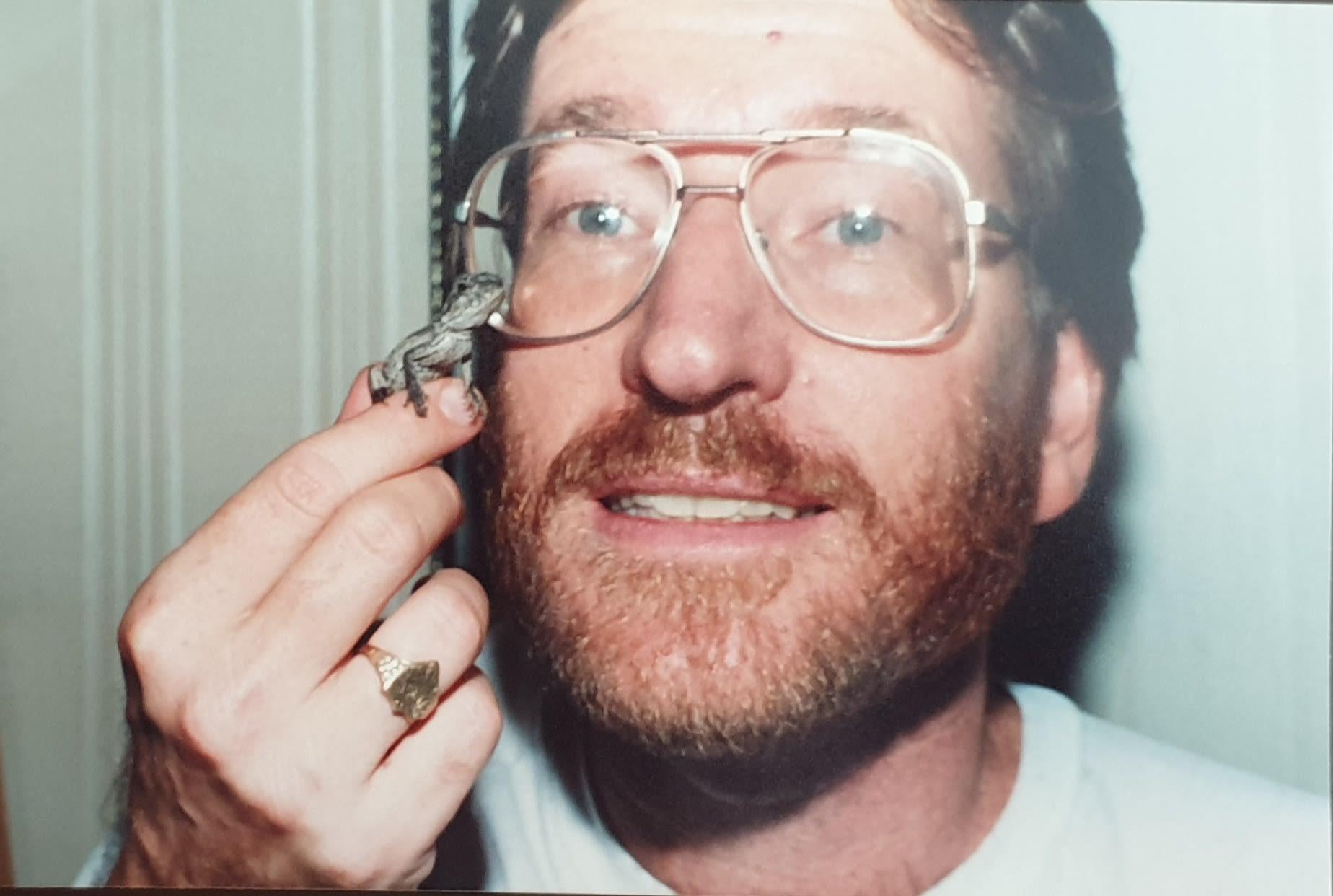
Knowing this animal has gone, how does that make you feel—has it changed your relationship with where you live?
If they are truly gone, I would feel terribly sad. I still live in the general area and I don’t think I’ve seen a bearded dragon for over 20 years. And it’s not for want of looking! I hope they still survive somewhere in the Brisbane metropolitan area, but they certainly aren’t the common sight they once were.
I don’t know that it has changed my relationship with where I live. I still feel fortunate for the other wildlife and for the natural environment that we do have. For example, it has recently been revealed that bushland within walking distance from my house is now home to a few koalas. I’ve lived here all my life and I would never have believed that was possible. It took me over a year to spot one—but what a joy when I finally did! I would feel the same level of joy if I was lucky enough to come across a bearded dragon. Maybe more, given their links to so many happy childhood memories.
Do you have an idea as to why the animal disappeared? What are your concerns for the environment without it?
Loss of habitat I’m sure would certainly be a factor, but since they were regular visitors to backyards I’d say the increased presence of cats and dogs and perhaps foxes played a big part. Another reason suggested to me was their popularity in the pet trade and illegal poaching from the wild.
I’ve also wondered whether the success of another native lizard species could have forced them out. Strangely enough where the bearded dragons have all but vanished in Brisbane, the eastern water dragon population has exploded and they seem to be thriving particularly around creeks and waterways. I regularly see these large lizards on my walks and I don’t ever recall them when I was young. The change in the fortunes of the two populations might be due to the fact that the water dragons move more quickly than bearded dragons and also have the close cover of water and dense creek vegetation to escape into whereas bearded dragons were more susceptible in the suburban setting.
For me the local environment without bearded dragons feels diminished and I have a sense of loss. It also makes me worry that if these very visible creatures have disappeared, what else might be lost, now and in the future. It’s sad to think that these days the only place you might come across a bearded dragon is in a pet shop or a zoo.
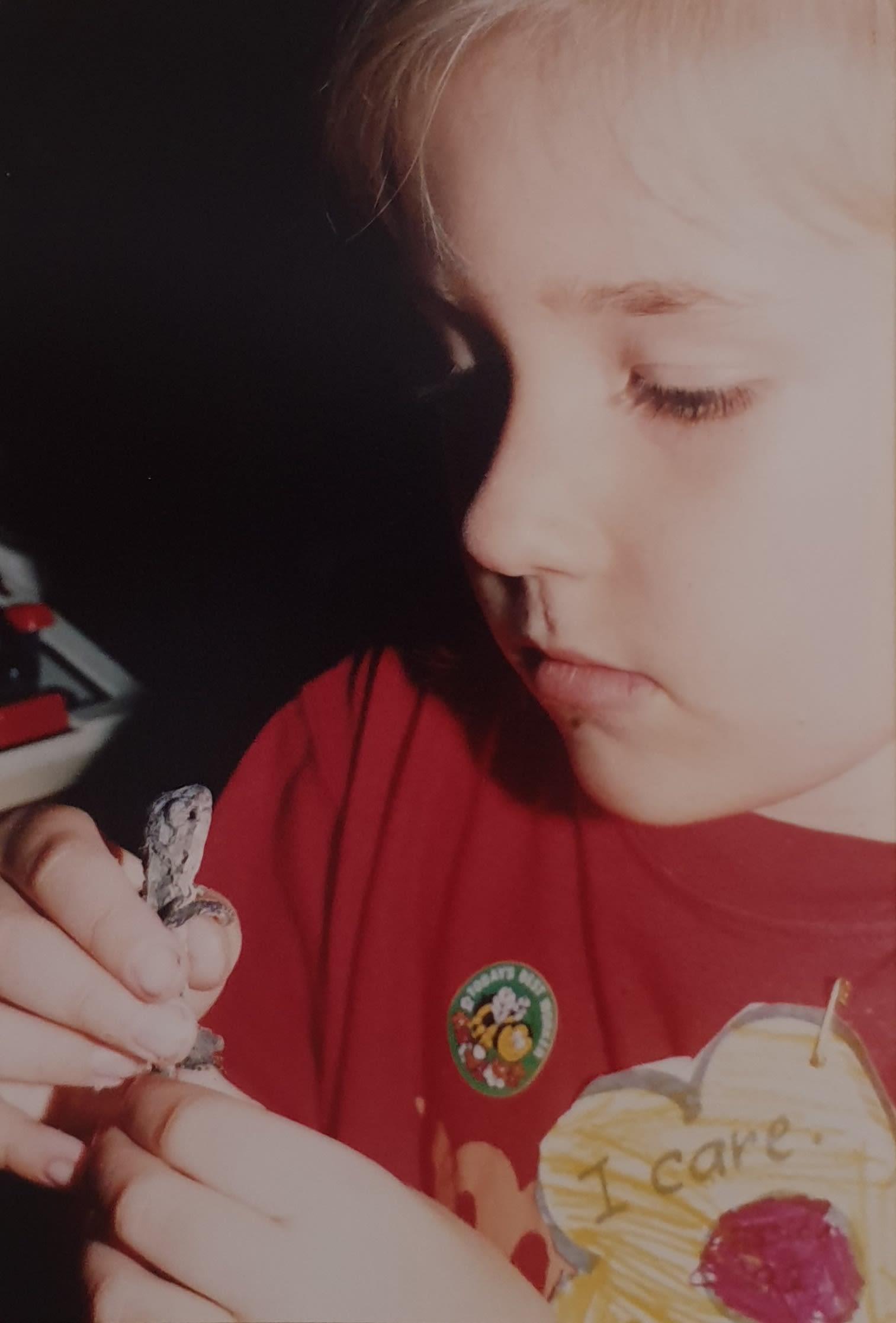
Do you feel there is a way you can help and do you have hope that with measures like stronger nature laws, we can begin to bring species back to where they once were?
As well as giving my support to wildlife organisations, I like to think that I’m much more aware of my own potential impact on the environment than I was as a young boy who kept bearded dragons as pets. I do believe that stronger nature laws can stop the decline of species and I am hopeful they might be capable of reversing the trend.
But much more needs to be done to protect and regenerate habitat as well as reduce the terrible impact of introduced species and domestic pets, particularly cats. I think we need much tighter regulation and control of cat ownership. I hope the day will come when I’ll see a beautiful frilly sitting on my back fence again. But at present I’d be thrilled just to see one anywhere in the wild.
Thanks in part to a long campaign from Wilderness Society South Australia to safeguard the state's remaining wilderness, in December 1993 the SA government declared over 70,000 hectares of Kangaroo Island a protected wilderness area. The proclamation threw a lifeline to the island's animals facing extinction like the glossy black cockatoo.
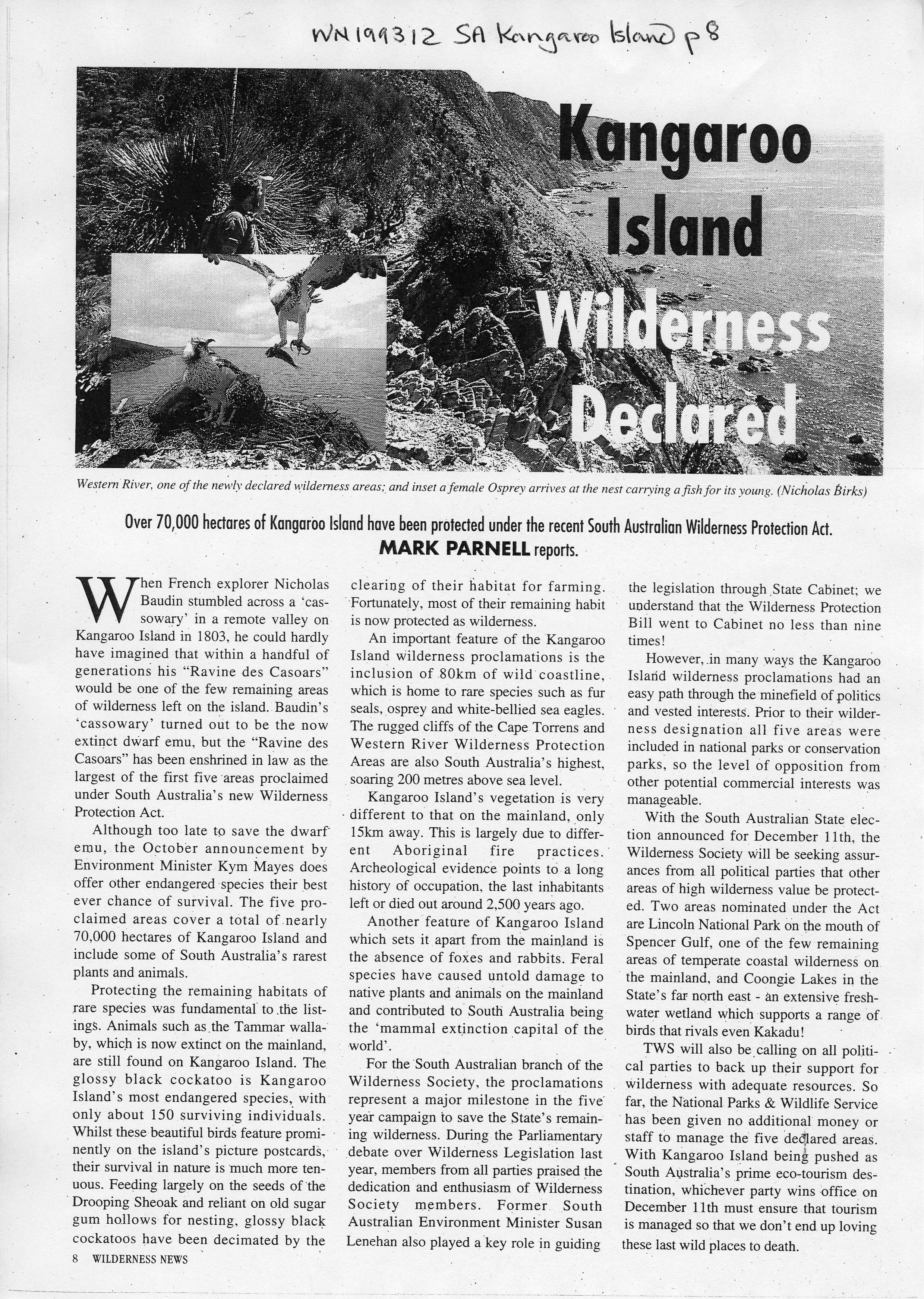
From Harrisson's dogfish to Mitchell's Rainforest snail, and the 476 species in between, please take time to read the names of the Australian animals that the Earth is in danger of losing forever.
Footage above from the National Film and Sound Archive of Australia of the last thylacine filmed in 1932 at Beaumaris Zoo, Hobart.
Taken from the EPBC Act List of Threatened Fauna.
Fishes
Harrisson's dogfish
Southern dogfish
School shark
Orange roughy
Eastern gemfish
Blue warehou
Scalloped hammerhead
Southern bluefin tuna
Fishes
Ziebell’s handfish
Grey nurse shark (west coast population)
White shark
Edgbaston goby
Black rockcod
Swamp galaxias
Saddled galaxias
Eastern dwarf galaxias
Murray cod
Blind gudgeon
Flinders Ranges morgunda
Balston’s pygmy perch
Southern pygmy perch (Murray-Darling Basin lineage)
Yarra pygmy perch
Variegated pygmy perch
Australian lungfish
Blind cave eel
Shannon paragalaxias
Great Lake paragalaxias
Dwarf sawfish
Freshwater sawfish
Green sawfish
Australian grayling
Honey blue eye
Whale shark
Frogs
Orange-bellied frog
Giant burrowing frog
Green and golden bell frog
Australian lace-lid
Little john’s tree frog
Wallum sedge frog
Peppered tree frog
Growling grass frog
Alpine tree frog
Stuttering frog
Giant barred frog
Magnificent brood frog
Sunset frog
Howard River Toadlet
Reptiles
Plains death adder
Five-clawed worm-skink
Pink-tailed worm-lizard
Flinders Ranges worm-lizard
Pedra Branca skink
Green turtle
Lord Howe Island gecko
Three-toed snake-tooth-skink
Yinnietharra rock-dragon
Lancelin Island skink
Hamelin ctenotus
Stripped legless lizard
Atherton delma
Adorned delma
Ornamental snake
Yakka skink
Hawksbill turtle
Dunmall’s snake
Broad-headed snake
Mount Cooper striped skink
Olive python (Pilbara subspecies)
Great Desert skink
Jurien Bay skink
Flatback turtle
Krefft’s tiger snake (Flinders Ranges)
Lord Howe Island skink
Bronzeback snake-lizard
Christmas Island blind snake
Fitzroy River turtle
Border thick-tailed gecko
Bell’s turtle
Birds
Slender-billed thornbill (Gulf St Vincent)
Kangaroo Island Striated Thornbill
Short-tailed grasswren (Flinders Ranges)
Thick-billed grasswren
Western grasswren (Gawler Ranges)
White-throated grasswren
Australian lesser noddy
Kangaroo Island little wattlebird
Shy heathwren (Kangaroo Island)
Forest red-tailed black cockatoo
Gape Barren goose (south-western)
Greater sand plover
Antipodean albatross
Gibson’s albatross
Southern royal albatross
Wandering albatross
Red goshawk
Grey falcon
Crested shrike-tit (northern)
White-bellied storm-petrel (Tasman Sea)
Squatter pigeon (southern)
Partridge pigeon (western)
Partridge pigeon (eastern)
Painted honeyeater
Blue petrel
White-throated needletail
Malleefowl
Imperial shag (Heard Island)
Imperial shag (Macquarie Island)
Nunivak bar-tailed godwit
Northern giant petrel
White-winged fairy-wren (Barrow Island)
White-winged fairy-wren (Dirk Hartog Island)
Horsfield’s bushlark (Tiwi Islands)
Christmas Island hawk-owl
Golden whistler (Norfolk Island)
Red-lored whistler
Fairy prion (southern)
Norfolk Island robin
Sooty albatross
Green rosella (King Island)
Kangaroo Island crimson rosella
Princess parrot
Regent parrot (eastern)
Superb parrot
Palm cockatoo (Australian)
Mallee whipbird
Soft-plumaged petrel
Kermadec petrel (western)
Antarctic tern (Indian Ocean)
Australian fairy tern
Southern emu-wren (Eyre Peninsula)
Black currawong (King Island)
Lord Howe Island currawong
Buller’s albatross
Northern Buller’s albatross
Indian yellow-nosed albatross
Campbell albatross
Black-browed albatross
Salvin’s albatross
White-capped albatross
Eastern hooded plover
Black-breasted button-quail
Painted button-quail (Houtman Abrolhos)
Masked owl (Tasmanian)
Masked owl (northern)
South Australian bassian thrush
Mammals
Fawn antechinus
Swamp antechinus (mainland)
Sei whale
Fin whale
Boodie (Barrow and Boodie Islands)
Burrowing bettong (Shark Bay)
Large-eared pied bat
Brush-tailed rabbit-rat
Kowari
Chuditch
Spotted-tail quoll (Tasmanian population)
Semon’s leaf-nosed bat
Golden bandicoot (mainland)
Golden bandicoot (Barrow Island)
Southern brown bandicoot (Nuyts Archipelago)
Spectacled hare-wallaby (Barrow Island)
Rufous hare-wallaby (Bernier Island)
Rufous hare-wallaby (Dorre Island)
Banded hare-wallaby
Wopilkara
Ghost bat
Greater bilby
Broad-toothed rat (mainland)
Humpback whale
Black-footed tree-rat (Melville Island)
Black-footed tree-rat (north Queensland)
Southern elephant seal
Dusky hopping-mouse
Corben’s long-eared bat
Barrow Island wallaroo
Eastern barred bandicoot (Tasmania)
Greater glider
Warru
Recherche rock-wallaby
Brush-tailed rock-wallaby
Mount Claro rock wallaby
Yellow-footed rock-wallaby (central-western Queensland)
Yellow-footed rock-wallaby (SA and NSW)
Red-tailed phascogale
Northern brush-tailed phascogale
Kimberley brush-tailed phascogale
Long-nosed potoroo (SE Mainland)
Plains rat
Shark Bay mouse
New Holland mouse
Pilliga mouse
Grey-headed flying-fox
Large-eared horseshoe bat
Pilbara leaf-nosed bat
Bare-rumped sheath-tailed bat
Quokka
Butler’s dunnart
Julia Creek dunnart
Northern brushtail possum
Water mouse
Arnhem rock-rat
Other animals
Giant freshwater crayfish
Eastern Stirling Range pygmy trapdoor spider
Mount Arthur burrowing crayfish
Burnie burrowing crayfish
Simson’s stag beetle
Vanderschoor’s stag beetle
Shield-backed trapdoor spider
Cape Range remipede
Giant Gippsland earthworm
Marrawah skipper
Bathurst copper butterfly
Tasmanian live-bearing seastar
Golden sun moth
Carter’s freshwater mussel
Fishes
Elizabeth Springs goby
Murray hardyhead
Golden galaxias
Swan galaxias
Barred galaxias
Clarence galaxias
Western trout minnow
Blackstriped dwarf galaxias
Northern River shark
White’s seahorse
Clarence River cod
Trout cod
Mary River cod
Macquarie perch
Lake Eacham rainbowfish
Oxleyan pygmy perch
Little pygmy perch
Arthurs paragalaxias
Redfin blue eye
Maugean skate
Frogs
Tapping nursery-frog
Sloane’s froglet
Booroolong frog
Fleay’s frog
Mountain frog
Richmond Range sphagnum frog
Eungella day frog
Mahony’s toadlet
Reptiles
Arnhem Land egernia
Loggerhead turtle
Arafura snake-eyed skink
Alpine she-oak skink
Christmas Island giant gecko
Leatherback turtle
Western spiny-tailed skink
Gulf snapping turtle
Mary River turtle
Blue Mountains water skink
Corangamite water skink
Olive Ridley turtle
Allan’s lerista
Nevin’s slider
Guthega skink
Slater’s skink
Yellow-snouted gecko
Pygmy blue-tongue lizard
Condamine earless dragon
Grassland earless dragon
Birds
Christmas Island goshawk
Bulloo grey grasswren (Bulloo)
Carpentarian grasswren
Gawler Ranges short-tailed grasswren (Gawler Ranges)
Tasmanian wedge-tailed eagle (Tasmanian)
Noisy scrub-bird
Rufous scrub-bird
Australasian bittern
Chestnut-rumped heathwren (Mt Lofty Ranges)
Red knot
South-eastern red-tailed black-cockatoo
Baudin’s cockatoo
Kangaroo Island glossy black-cockatoo (South Australian)
Carnaby’s cockatoo
Southern cassowary
Tasmanian azure kingfisher
Christmas Island emerald dove (Christmas Island)
Lesser sand plover
Norfolk Island green parrot
Coxen’s fig-parrot
Eastern bristlebird
Western bristlebird
Amsterdam albatross
Tristan albatross
Northern royal albatross
Alligator Rivers yellow chat (Alligator Rivers)
Gouldian finch
Christmas Island frigatebird
Buff-banded rail (Cocos (Keeling) Islands)
Lord Howe woodhen
Southern giant-petrel
Purple-crowned fairy-wren (western)
Black-eared miner
Kangaroo Island brown-headed honeyeater
Crimson finch (white-bellied)
Star finch (eastern)
Kangaroo Island white-eared honeyeater
Norfolk Island boobook
Abbott’s booby
Forty-spotted pardalote
Night parrot
Christmas Island white-tailed tropicbird
Southern black-throated finch
Golden-shouldered parrot
Western whipbird (Kangaroo Island)
Western heath whipbird
Gould’s petrel
Australian painted snipe
New Zealand Antarctic tern
Kangaroo Island southern emu-wren
Fleurieu Peninsula southern emu-wren
Mallee emu-wren
Shy albatross
Grey-headed albatross
Chatham albatross
Christmas Island thrush
Buff-breasted button-quail
Tiwi masked owl
Mammals
Silver-headed antechinus
Black-tailed antechinus
Subantarctic fur-seal
Blue whale
Woylie
Northern bettong
Mountain pygmy-possum
Northern quoll
Spotted-tailed quoll (North Queensland)
Spotted-tailed quoll (southeastern mainland population)
Eastern quoll
Southern right whale
Arnhem leaf-nosed bat
Southern brown bandicoot (eastern)
Mala (Central Australia)
Black-footed tree-rat (Kimberley and mainland Northern Territory)
Numbat
Australian sea-lion
Northern hopping-mouse
Bridled nail-tail wallaby
Dibbler
Western barred bandicoot (Shark bay)
Eastern barred bandicoot (Mainland)
Yellow-bellied glider (Wet Tropics)
Mahogany glider
Cape York rock-wallaby
Nabarlek (Top End)
Nabarlek (Kimberly)
Wiliji
Black-flanked rock-wallaby
Proserpine rock-wallaby
Koala (combined populations of Queensland, New South Wales and the Australian Capital Territory)
Long-footed potoroo
Smoky mouse
Hasting River mouse
Heath mouse
Spectacled flying-fox
Tasmanian devil
Kangaroo Island dunnart
Sandhill Dunnart
Kangaroo Island echidna
Carpentarian rock-rat
Other animals
Brigalow woodland snail
Dulacca woodland snail
Tasmanian chaostola skipper
Tingle pygmy trapdoor spider
Cauliflower soft coral
Central north burrowing crayfish
Furneaux burrowing crayfish
Scottsdale burrowing crayfish
Walpole burrowing crayfish
Glenelg spiny freshwater crayfish
Blind velvet worm
Broad-toothed stag beetle
Maroubra woodland snail
Fitzroy land snail
Ptunarra brown
Eltham copper butterfly
Pink underwing moth
Lord Howe flax snail
Dural land snail
Semotrachia euzyga; a land snail
Bednall’s land snail
Alpine stonefly
Banksia brownii plant louse
Antbed parrot moth
Fishes
Silver perch
Spotted handfish
Grey nurse shark (east coast population)
Flathead galaxias
Stocky galaxias
Speartooth shark
Opal cling goby
Red handfish
Frogs
Elegant frog
Hosmer’s frog
McDonald’s frog
Mountain-top nursery-frog
Neglected frog
White-bellied frog
Yellow-spotted tree frog
Kroombit treefrog
Armoured mistfrog
Kuranda tree frog
Mountain mistfrog
Spotted tree frog
Baw baw frog
Southern corroboree frog
Northern corroboree frog
Kroombit Tinker frog
Tinkling frog
Reptiles
Short-nosed seasnake
Leaf-scaled seasnake
Christmas Island blue-tailed skink
Southern snapping turtle
Christmas Island gecko
Nangur spiny skink
Gulbaru gecko
Western swamp tortoise
George’s snapping turtle
Birds
King Island scrubtit
Grey range thick-billed grasswren (north-west NSW)
Regent honeyeater
Curlew sandpiper
Great knot
Mt Lofty ranges spotted quail-thrush (Mt Lofty Ranges)
Capricorn yellow chat (Dawson)
Swift parrot
Helmeted honeyeater
Northern Siberian bar-tailed godwit
Tiwi Islands hooded robin
Orange-bellied parrot
Eastern curlew
Plains-wanderer
Western ground parrot
Round Island petrel
Herald petrel
Mammals
Christmas Island shrew
Leadbeater’s possum
Northern hairy-nosed wombat
Southern bent-wing bat
Nabarlek (Victoria River District)
Gilbert’s potoroo
Western ringtail possum
Christmas Island flying-fox
Central rock-rat
Other animals
Boggomoss snail
Campbells’ keeled glass-snail
Ammonite pinwheel snail
Australian fritillary
Hairy marron
Lord Howe Island phasmid
Margaret River burrowing crayfish
Dunsborough burrowing crayfish
Freshwater crayfish
Fitzroy falls spiny crayfish
Magnificent helicarionid land snail
Douglas’ broad-headed bee
Bornemissza’s stag beetle
Glenelg freshwater mussel
Leioproctus douglasiellus; a short-tongued bee
Derwent river seastar
Gray’s helicarionid land snail
Philip Island helicarionid land snail
Suter’s striped glass-snail
Francistown cave cricket
Masters’ charopid land snail
Neopasiphae simplicior; a native bee
Arid bronze azure
Rosewood keeled snail
Mount Lidgbird charopid land snail
Whitelegge’s land snail
Banksia montana mealybug
Stoddart’s helicarionid land snail
Mitchell’s rainforest snail
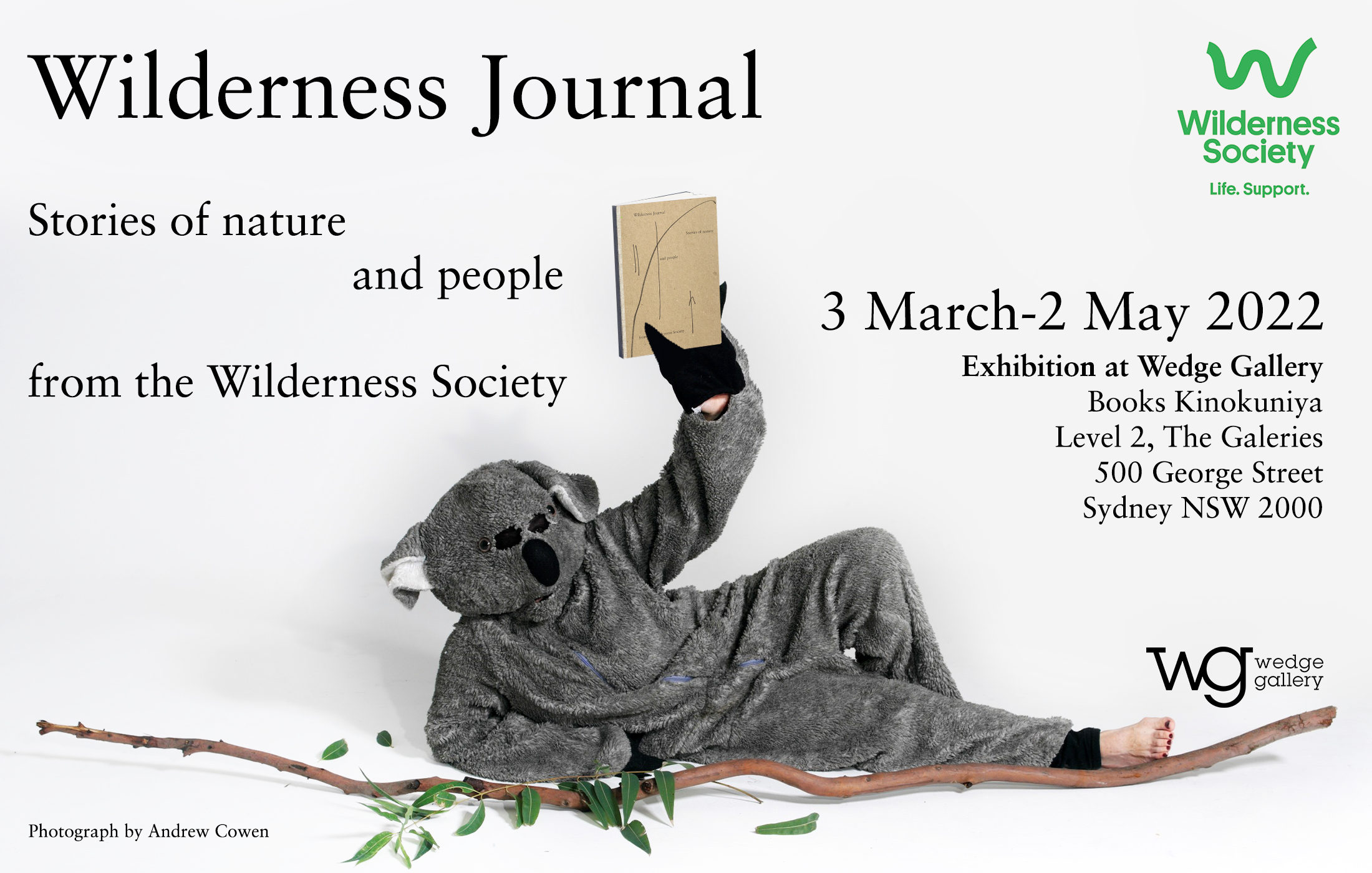
We thank all the artists, poets, photographers, scientists and writers who've given their work to this edition. If you have anything from your own archive to share, get in touch.
We recognise First Nations as the custodians of land and water across the continent of Australia and pay our respects to Elders past and present. We acknowledge sovereignty was never ceded.